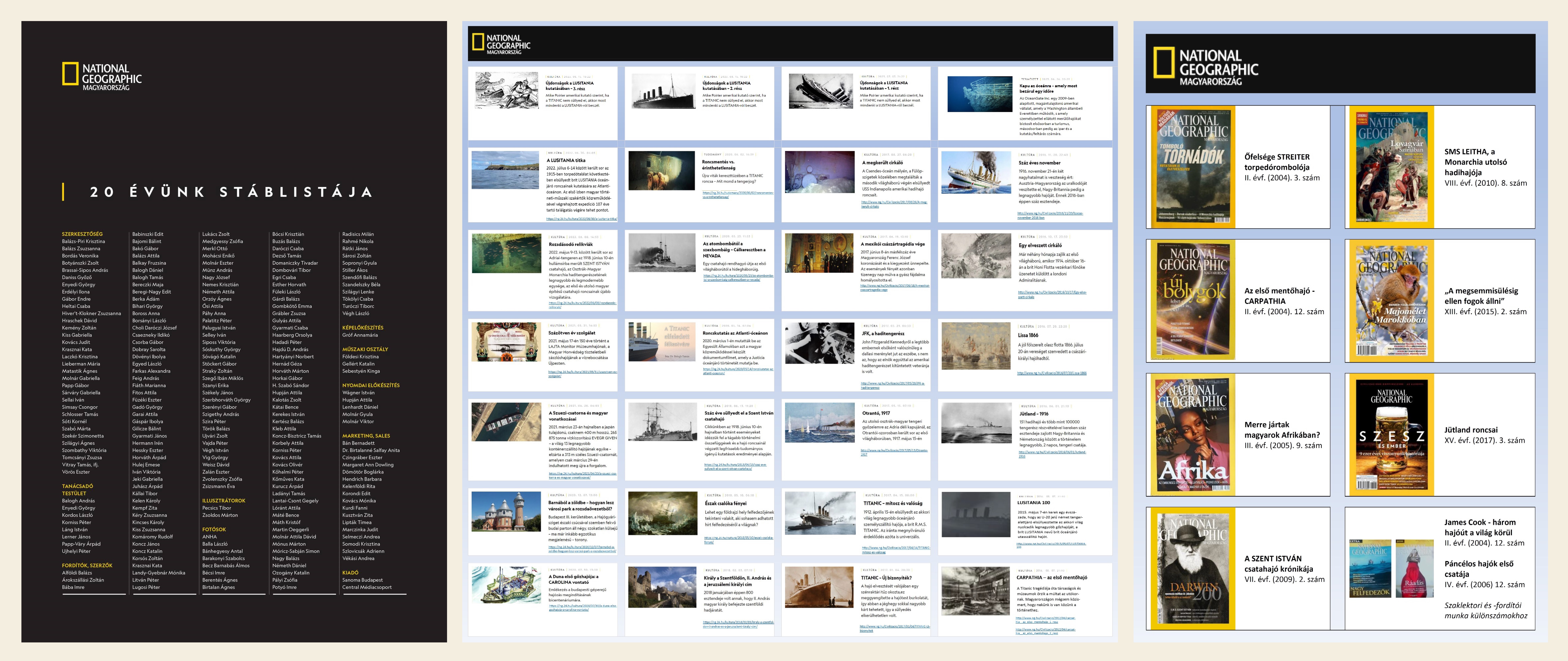Contents tagged with balogh_tamas
-
The development of oceangoing steamships 1840-1940
In 1936, on the occasion of the inauguration of the British passenger liner R.M.S. QUEEN MARY, the British cigarette manufacturer, the Churchman's published a series of 50 cigarette cards on which the new liner was advertised under the title "Wonders of the QUEEN MARY". On one of the cards, the newest ship of the owner shipping company, Cunard Line, built in 1936, was compared with the company's very first ship, BRITANNIA, put into service almost a hundred years earlier, in 1840.
Blank cards - cardboard sheets - were originally used to stiffen cigarette packets. Colored, stylish cigarette cards and match labels varied with pictures, witty texts, and informative descriptions began to spread as label art for marketing purposes after the appearance of cheap cigarettes available to the general public in the 1880s, and then, from the 1920s, the explosion the printing industry went through a similar development, and the new technologies of lithography and the expansion of consumer needs enabled the strong growth of the market.
That's when the thematic sets depicting celebrities (military leaders, movie stars, radio celebrities, athletes), sports (football, cricket, golf), nature (animal world, geography), history (castles, coats of arms, battle scenes), or even technical achievements (airplanes, cars, locomotives, naval- and merchant ships) appeared on cigarette cards for the design and production of which the largest tobacco product manufacturers employed separate graphic groups - studios specializing in cigarette cards and match labels.and even published independent collector's catalogs, with which they all tried to ensure brand loyalty among new smokers for their products.
These products also attracted the attention of younger age groups who are thirsty for novelty, who, primarily through collecting, or after school disappointments, found the opportunity to learn while having fun through the interesting pictures and the explanations written on the back of the illustrated cards (while the tobacco companies gained potential consumers in the form of young collectors who learned smoking habits from adults). In the 1920s and 1930s, 100 British tobacco manufacturers launched 2,000 collectible series (!) in this way. Among them was the series of 50 cards, in which there is a representation comparing the size of QUEEN MARY and BRITANNIA.
From a genre point of view, such representations sold on cigarette cards form an independent type of comparison drawings presenting the impressive dimensions of ocean liners. The representation of the two famous Cunard ships inspired the president of our association, who works on the "Encyclopedia of Ocean Liners", to recreate the 1936 representation by using the scale profile drawings he made:
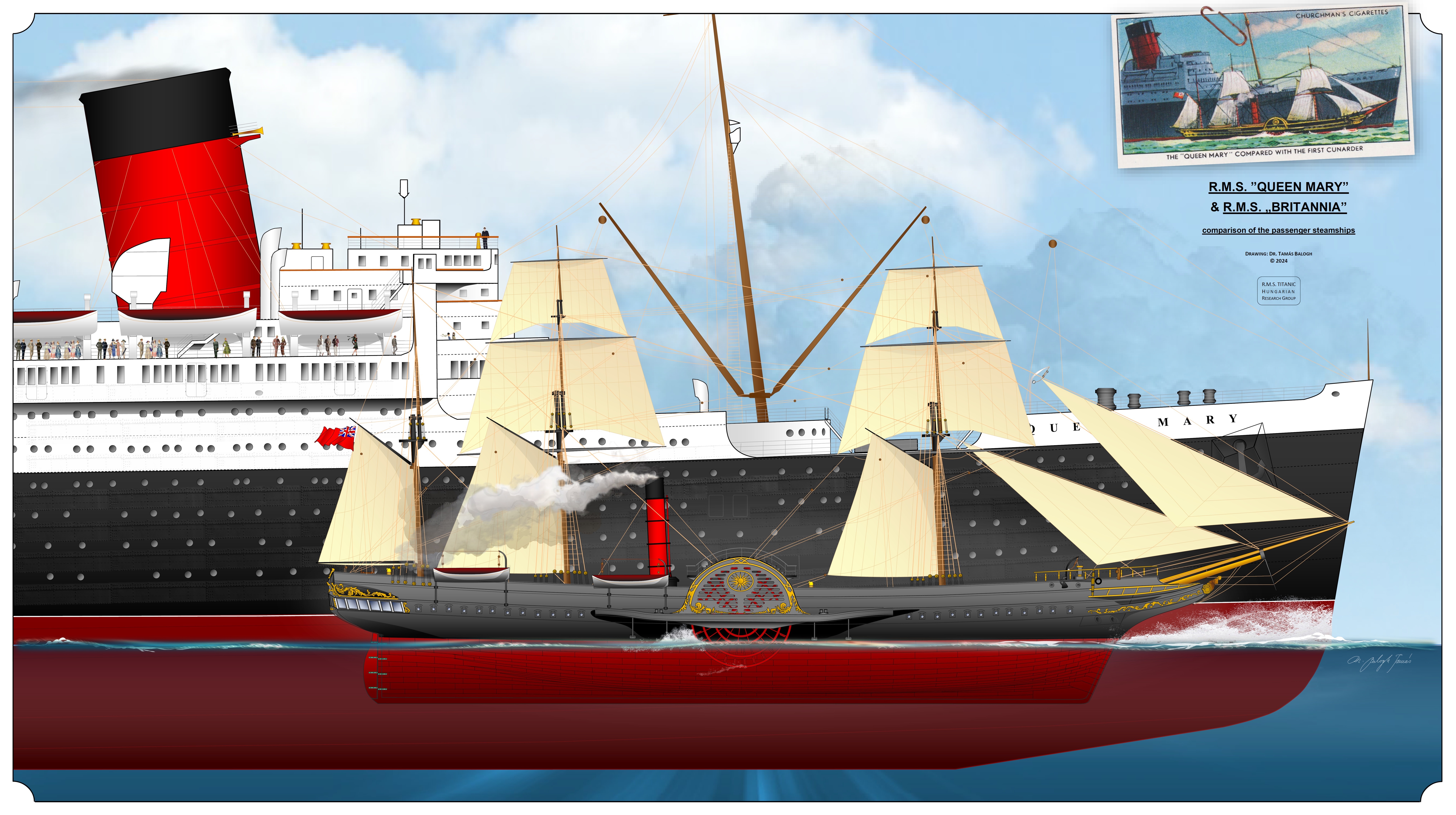
Figure 1: The recreated comparison drawing and the original from 1936 (in the upper right corner). Made by Dr. Tamás Balogh © 2025.
Steamship construction gained momentum in the middle of the 19th century, similarly to the construction of steam locomotives during the railway mania between 1830-1847 (when 263 laws and 15,300 km of new railways were established in Great Britain alone, although the mania had its effect throughout Europe, since 10,000 km of railways were built in Germany between 1845-1855, 2,341 km between 1847-1867, then 21,200 km in Hungary.
The steamship - thanks to the work of Robert Fulton, who perfected it - was nevertheless initially more popular in America than in Europe: In 1829, the United States had 54,037 tons, Great Britain barely 25,000 tons. 10 years later, 193,423 vs. 82,716 tons, in 1848, 427,891 vs. 168,078 tons, after another ten years, and in 1858 already 729,390 vs. 488,415 tons was the ratio. There had to wait until 1876, until the year came when more steamships were built than sailing ships.
The rudimentary steamships of the 1830s, which were still mostly only for stunts - barely a few tens of meters long, no more than 200-250 tons, and equipped with steam engines of barely 50 HP - grew rapidly, and their performance improved considerably due to the development of their structure and steam engines. The milestones of the development is marked by such technical feats as the ships depicted in the picture above: The wooden BRITANNIA was a large ship in its time, with a length of 63 meters and a width of 10.3 meters. In addition to the sails of her three masts, she was propelled by paddle wheels powered by a 740 horsepower two-cylinder steam engine. The ship's 4 coal-burning boilers provided the ship with a speed of 8.5 knots (16 km/h) with a daily coal consumption of 38 tons, which could go even faster in case of favorable winds and currents. The ship had a volume of 1,154 tons and was able to carry 115 passengers with a crew of 82. She crossed the Atlantic between Liverpool and Halifax in 12 days and 10 hours. In comparison, the QUEEN MARY is built of steel, has 310.7 meters in length, while her width is 36 m. Her four propellers were driven by the same number of steam turbines with an output of 700,000 horsepower. The ship's 27 oilburner boilers powered the ocean liner at a speed of 28.5-32.8 knots (53-61 km/h) using 1,000 tons of fuel oil per day. For 14 months between 1936-1937, and then without interruption between 1938-1952, she held the Blue Ribbon for the fastest Atlantic crossing. The gross tonnage of the ship is 81,237 tons, the number of passengers that can be taken on board is 2,140, while the number of crew is 1,100. Her fastest crossing time was 3 days 22 hours 42 minutes on the Halifax-Southampton route.
Between 1837-2003 - that is, while ocean liners were being built - several significant periods followed each other In the hundred years between 1840 and 1940, considered the heroic age of ocean liners, 1,019 ocean liners were built worldwide, while the world's 16 largest seafaring nations in 1914 had a total of 8,445 commercial ships (cargo and passenger ships combined) of more than 1,600 tons (suitable for ocean crossings) and 14,282 less than 1,600 tons - that is, a total of 22,727 - in operation, a total of 42,416. 000 tons of space. From the Belle Époque, which is considered the golden age of ocean liners, to the present day (during the 111 years between 1912-2023) - excluding the war years - a scant 20 ocean liners have sunk. In comparison, 50 ocean liners were sunk between 1914-1918 and 144 between 1939-1945 as a result of acts of war (compared to a total of 5,000 ships sunk in World War I and a total of 20,000 ships sunk in World War II), while barely a dozen ocean liners served in both world wars.Ocean liners therefore represent barely 1 thousandth (0.0071%) of the nearly 3,000,000 known shipwrecks sunk in world history.
It would be great if you like the article and pictures shared. If you are interested in the works of the author, you can find more information about the author and his work on the Encyclopedia of Ocean Liners Fb-page.
If you would like to share the pictures, please do so by always mentioning the artist's name in a credit in your posts. Thank You!
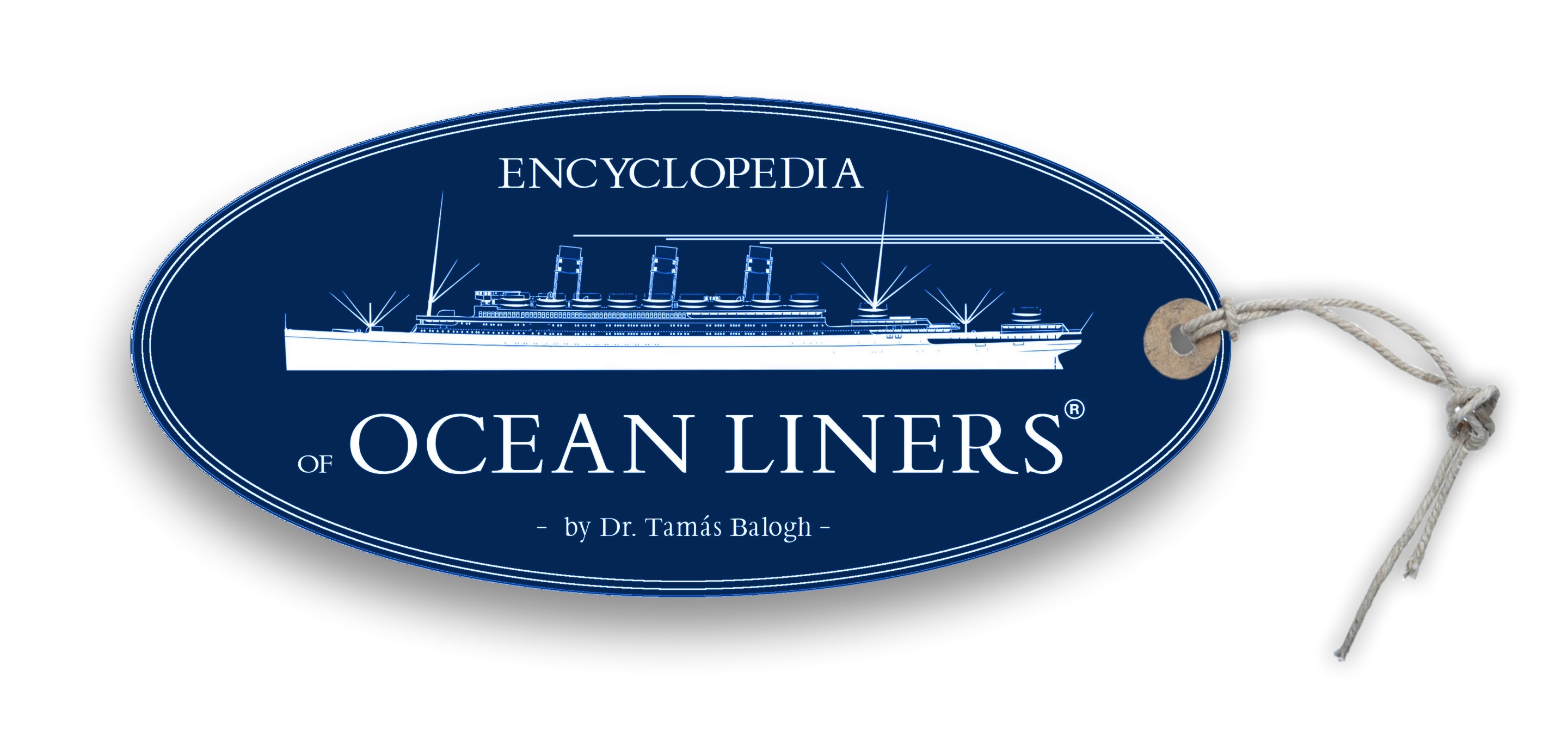
Sources:
Hurd, Archibald: A Merchant Fleet at War, London, Toronto, New York, Melbourne, 1920.
Charles, Roland W.: Troopships of Word War II., Washington, 1947.
Kudyshin, Ivan; Chelyadinov, Mikhail: Лайнеры на войне. 1936 1968 гг. постройки, Moscow, 2002.
Tebutt, Melanie: Children and hobbies in 1930s Britain: cigarette cards
Smith, Eugene W.: Transatlantic Passenger Ships - Past and Present, Boston, 1947.
Sz.n.: Mercantile Fleets - British an Foreign, in.: Scientific American Reference Book, 1914. p.195.
-
Docu-series "Secrets of the Lost Liners" continues
On the night of April 14 to 15, 2024, 112 years ago, the TITANIC sank. In commemoration of the anniversary, we publish the longitudinal section of the ship, which was prepared by the president of our association, Dr. Tamás Balogh, for the second season of the documentary series "Secrets of Lost Liners", which will be broadcast on April 29, 2024 in Great Britain, on the program of the History Channel. Among the six episodes of the season, the episode presenting the story of the TITANIC will be the first. Below, we present to those interested the latest drawings made for the series and a short overview of the new season.
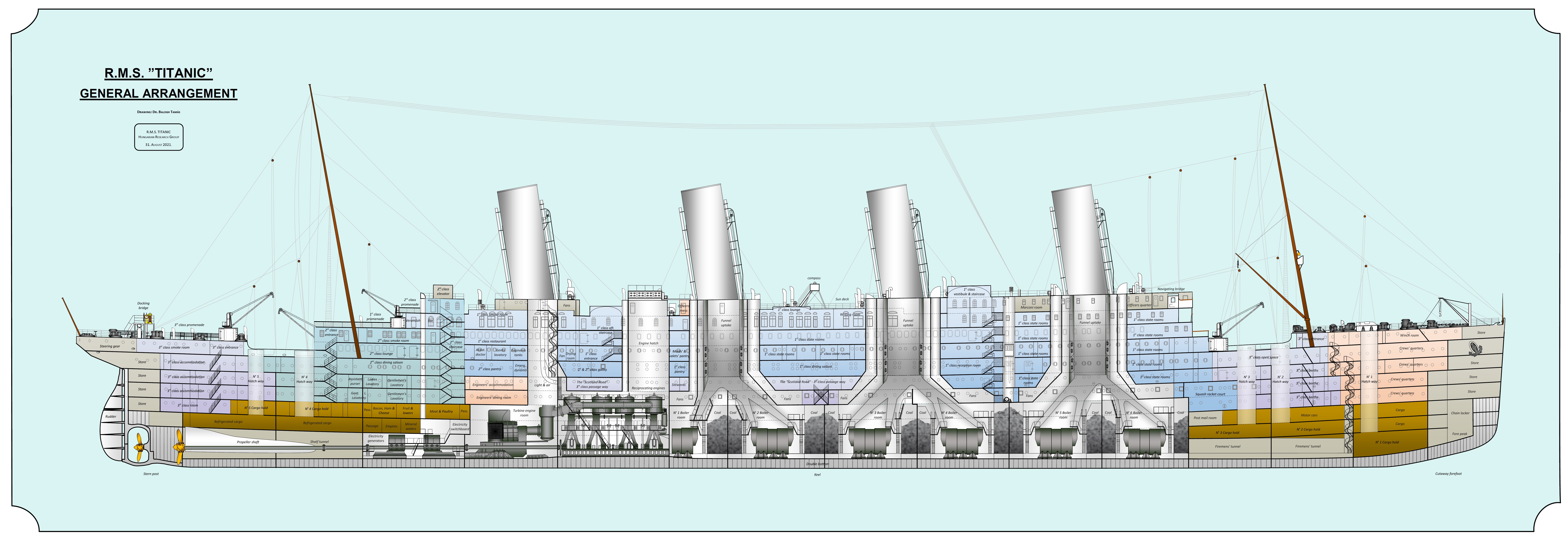
Fig. 1: Longitudinal section of the TITANIC (drawing: Dr. Tamás Balogh, 2023)
Six episodes of the second season of the documentary series "Secret of the Lost Liners" commissioned by the British History Channel will be broadcast from April 29, 2024. In the preparation of this series Dr. Tamás Balogh, president of the Hungarian Society for Maritime History, Modeling and Tradition, participated at the request of Max Barber, the producer-director of the series, as the creator of the technical drawings and as a specialist for historical and engineering analysis, among others together with renowned researchers of the history of ocean liners such as Mark Chirnside, Richard M. Jones, or Dr. Stephen Payne, the designer of the world's only real ocean liner currently in circulation, the QUEEN MARY 2.
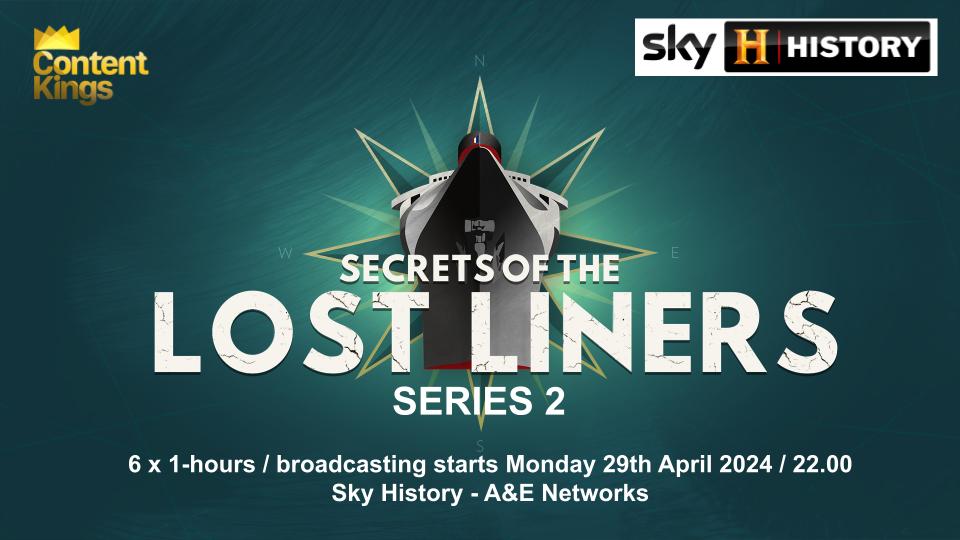
Fig. 2: Season Two TX (Programme Transmission date and time) card.
Secrets of The Lost Liners is a maritime documentary series that takes an in-depth look at the design, service and loss of the world's largest and most famous ocean liners. From the golden age of floating palaces to art deco icons to national symbols, this six-part documentary series showcases the most extravagant ships spanning almost 100 years; those that once pushed the boundaries of planning, but eventually came to a tragic end one by one as a result of war conflicts, accidents, or various human errors. Featuring technical experts and historians, the series presents "The Secrets of the Lost Liners" with unprecedented expertise and never-before-seen footage. The episodes of the first season, broadcast in 2022, are CAP ARCONA, REX, NORMANDIE, QUEEN ELIZABETH, AMERICA and ANDREA DORIA, and the 6 new episodes of the second season, which will be broadcast on April 29, 2024, are TITANIC, ILE de FRANCE, EMPRESS of BRITAIN, ACHILLE LAURO (ex-WILLEM RUYS), OCEANOS (ex-JEAN LABORDE) and COSTA CONCORDIA are presented.
For the series, a set of four drawings was created for each presented ship: 1) side and top views showing the external appearance, 2) general arrangement showing the position of the decks and rooms in relation to each other, 3) color schemes showing the livery and 4) a colored longitudinal section. The number of drawings varied for ships that were significantly rebuilt during their career. In the case of these, drawings showing the results of the rebuilding had to be prepared too, since the original and final state are both included in the documentary series, which covers the entire service history of the ships.
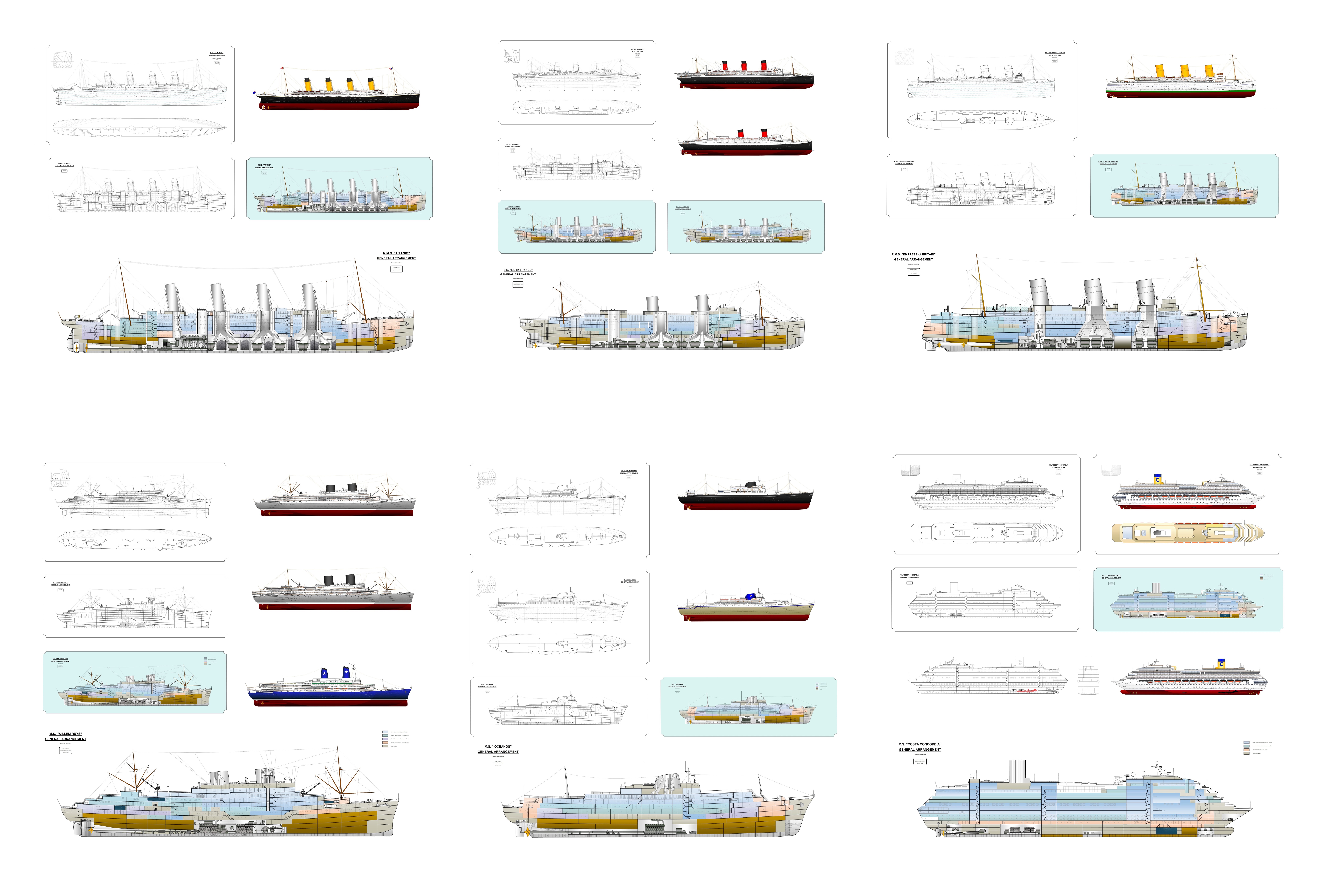
Fig. 3: Overview of the drawings made by Dr. Tamás Balogh.
The first season was broadcast on July 27, 2022, and the first "pitch" about the content of the next season, intended to convince the customer, was already prepared in November. After the channel gave the "green light", the draft of the script was completed by April 3, 2023, and by May 25 the drawings of TITANIC and ILE de FRANCE had already been completed. Half a year later, on September 6, 2023, all the drawings were ready.
Then came the expertise work and consultancy necessary to finalize the screenplay. Among other things, this covered details such as the use of onboard mail planes and their types, or the secrets of disaster film production (in connection with the ILE de FRANCE episode), and development of the location, design and lowering mechanisms of the lifeboats after the tragedy of the TITANIC (in relation to the ACHILLE LAURO, ex-WILLEM RUYS episode).
It was a great feeling when Max Barber, the producer-director of the series, expressed his gratitude for the cooperation in a reference letter with an appreciative tone similar to the one issued in connection with the first season:
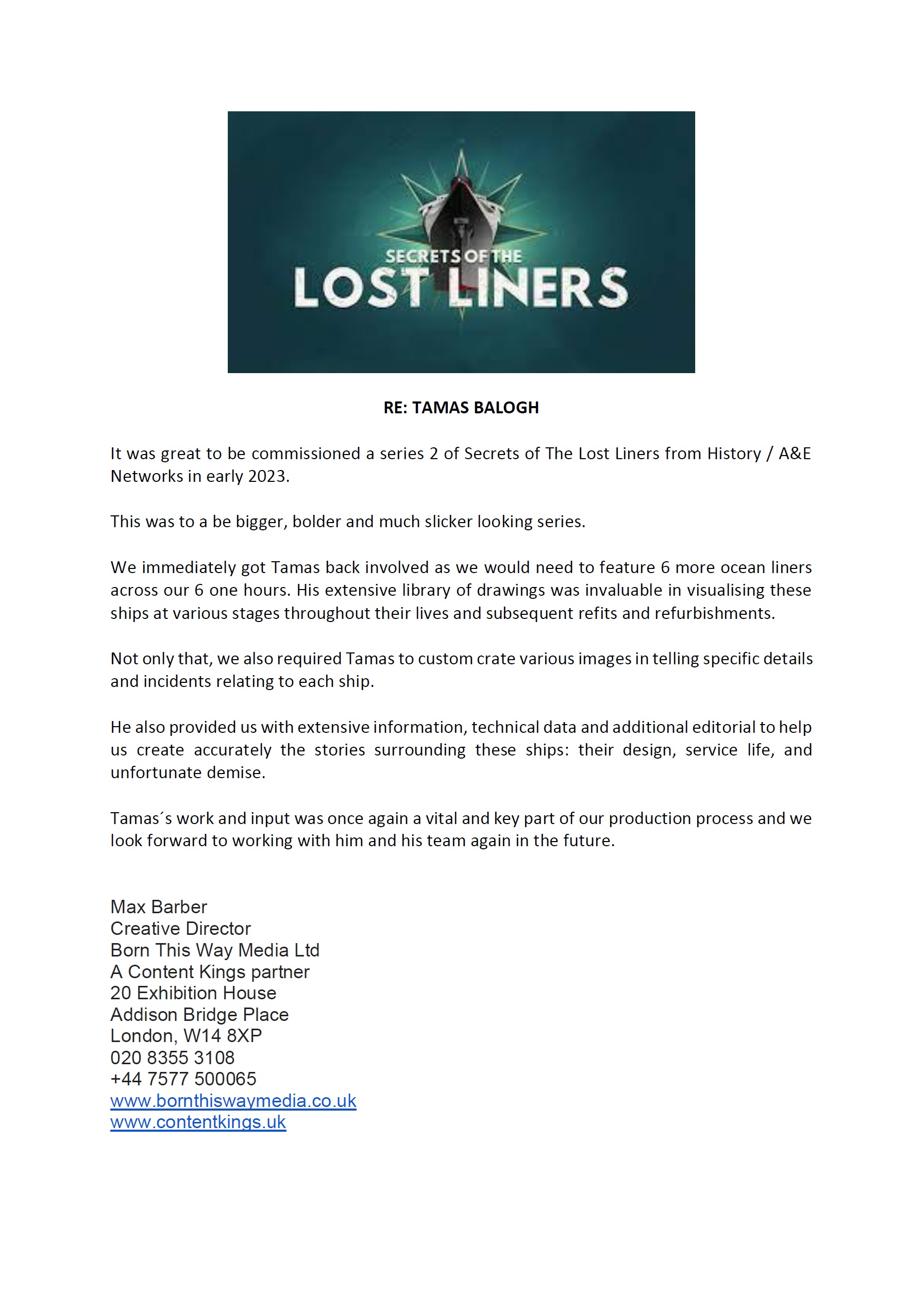
Fig. 4: Reference letter written by Max Barber.
In the meantime, the other members of the crew produced the external shots and recorded interviews with the experts who spoke. Between December 20, 2023 and February 29, 2024, post-production, adding graphics, effects and subtitles, and the work to be done in the recording studio (grading, sound design and mixing, voiceover & tech-spec delivery) took place at Directors Cut Films in London. The finished series was handed over to Sky-History on 28 March, which will broadcast the first episode, which will be about TITANIC, on 29 April 2024. Thanks to the entire team at Content Kings, Bossanova Media and Directors Cut Films, and of course the contributors and crew who helped make the second series.
The presentation of the series and the overview of the content of each episode given by the producer-director, Max Barber, can be viewed on his YouTube channel here: Ep1, Ep2, Ep3, Ep4, Ep5, Ep6.
TX dates are the next:
Episode 1 - TITANIC - Monday 29th April 2024, 9pm
Episode 2 - COSTA CONCORDIA - Monday 6th May
Episode 3 - ACHILLE LAURO - Monday 13th May
Episode 4 - OCEANOS - Monday 20th May
Episode 5 - EMPRESS of BRITAIN - Monday 27th May
Episode 6 - ILE de FRANCE - Monday 3rd June
It would be great if you like the article and pictures shared. If you are interested in the works of the author, you can find more information about the author and his work on the Encyclopedia of Ocean Liners Fb-page.
If you would like to share the pictures, please do so by always mentioning the artist's name in a credit in your posts. Thank You!

-
Further secrets of the LUSITANIA in the National Geographic Magazine
The remains of the British giant steamer LUSITANIA, resting in the Atlantic Ocean, were visited again between July 13-21, 2023 by the the international expedition, which began in 2022, and was the first which had that most important task is the internal research of the areas affected by the explosion of the torpedo that sank the ship, and which for the first time in the history of the research of the wreck, included Hungarian members. On this occasion, the president of our association Dr. Tamás Balogh, who participated in the expedition by evaluating the underwater photoes and footage made by the divers, wrote an article, which can now be read on the website of the Hungarian edition of the National Geographic Magazine.
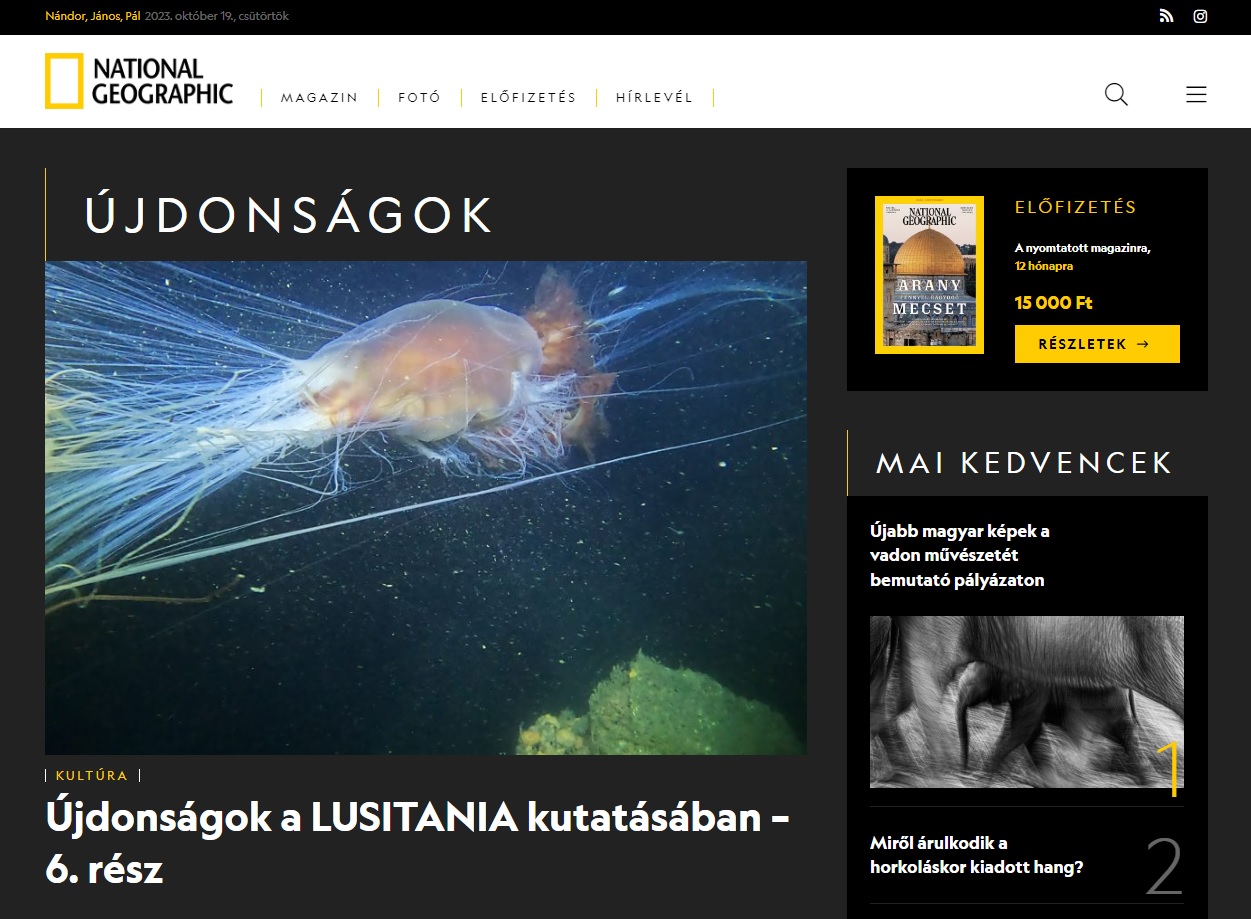
Fig. 1: LUSITANIA is on the cover.
An article summarizing the latest research results is available
in Hungarian here
in English here.
By comparing all of this with a similar report on the 2022 research, readers can get a complete over-all picture of the wreckage of the LUSITANIA.
Below we share some drawings made by hand on site during the expedition, which show the state of the ship's bow section in 1915, immediately after the sinking of the wreck, and today, in 2023, which was in the focus of the 2023 expedition.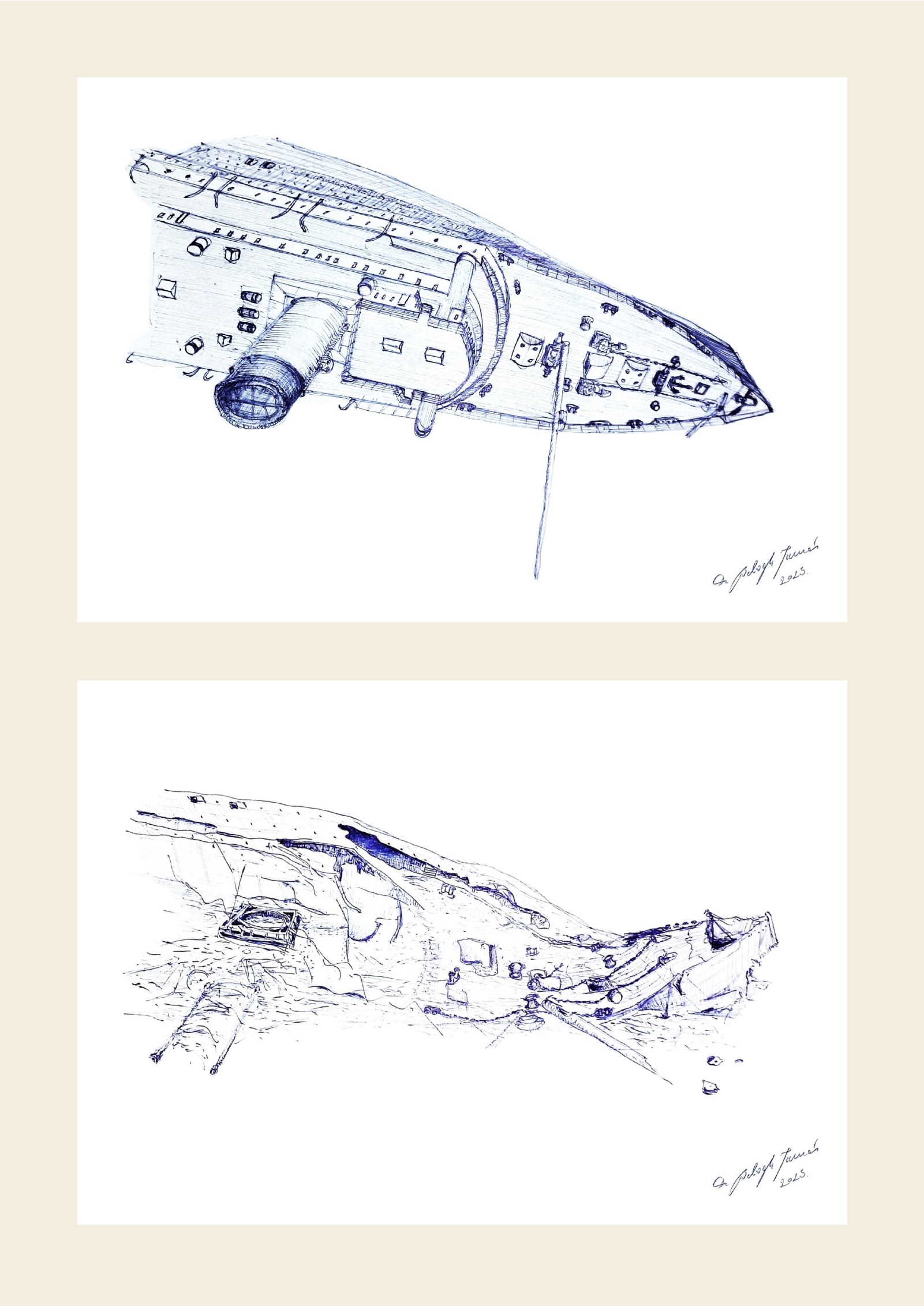
Fig. 2: The bow of the LUSITANIA on the seabed as seen from the bow deck in 1915 (above) and in 2023 (below). Created by Dr. Tamás Balogh © 2023.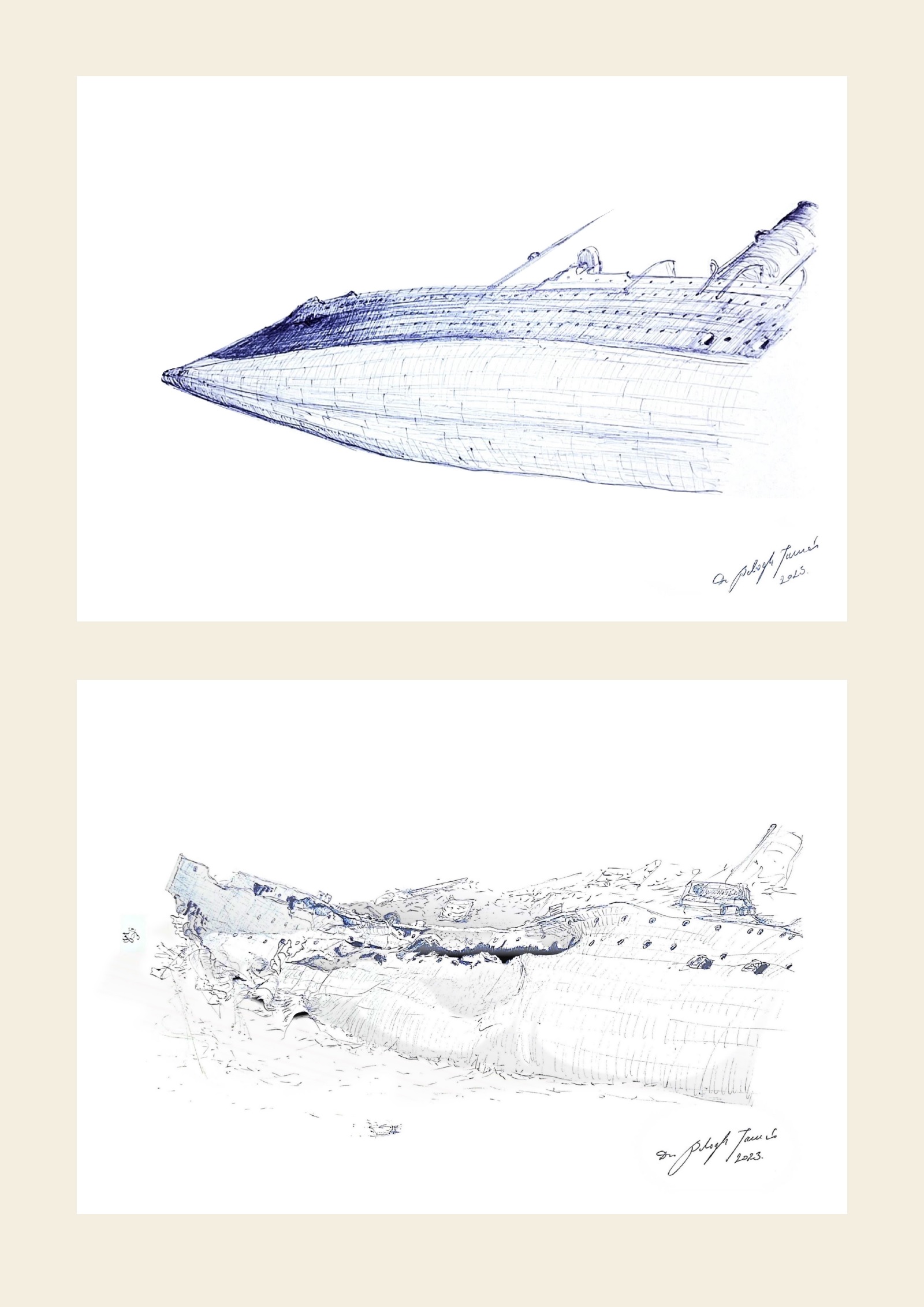
Fig. 3: The bow of the LUSITANIA on the seabed as seen from the bottom of the ship in 1915 (above) and in 2023 (below). Created by Dr. Tamás Balogh © 2023.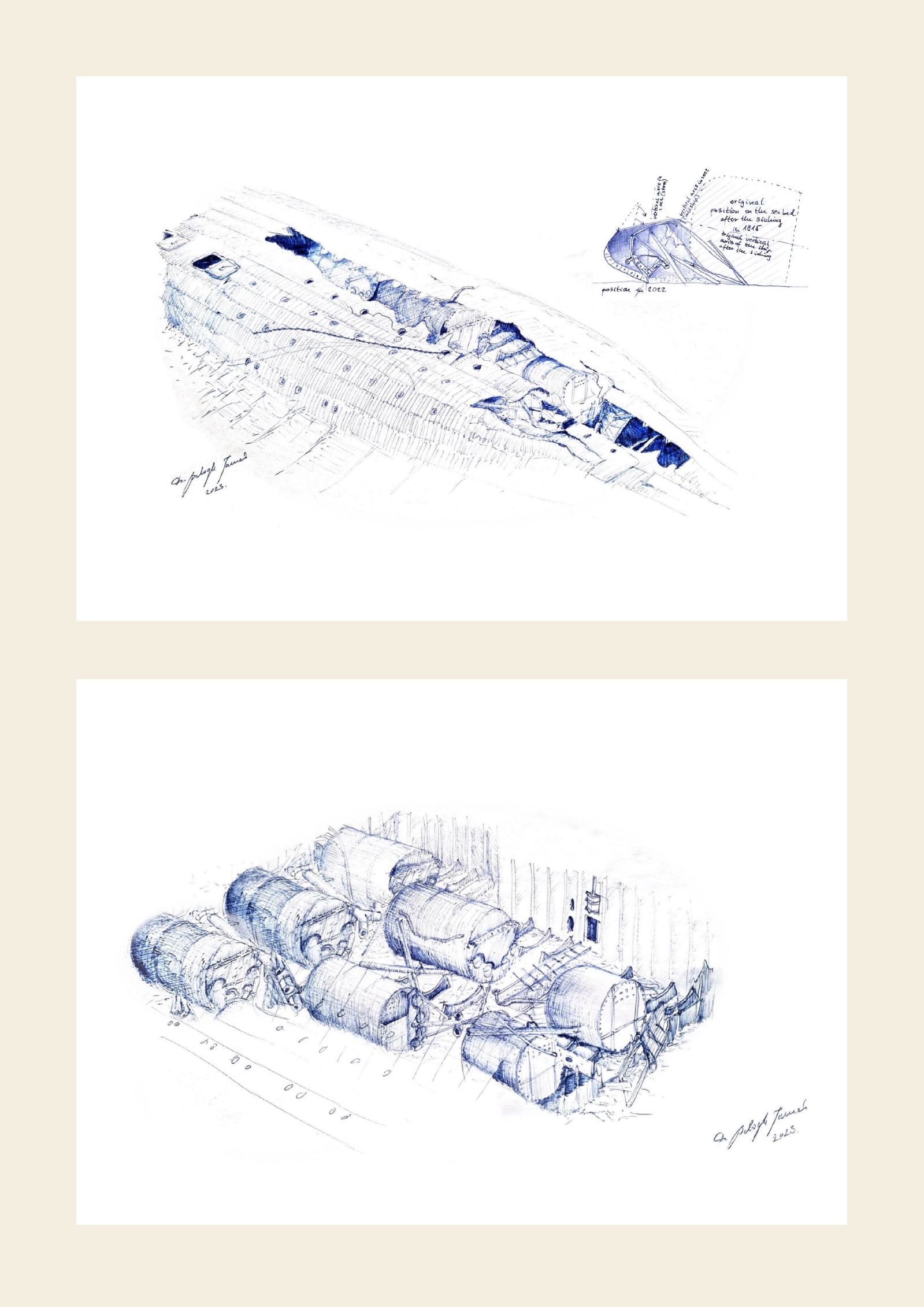
Fig. 4: The hull-section of the boiler room No 1. of LUSITANIA viewed from the top of the wreck (covered by the plates of the former port side) in 2023 (above) and the boilsers inside, "looking in" under the plates (below). Created by Dr. Tamás Balogh © 2023.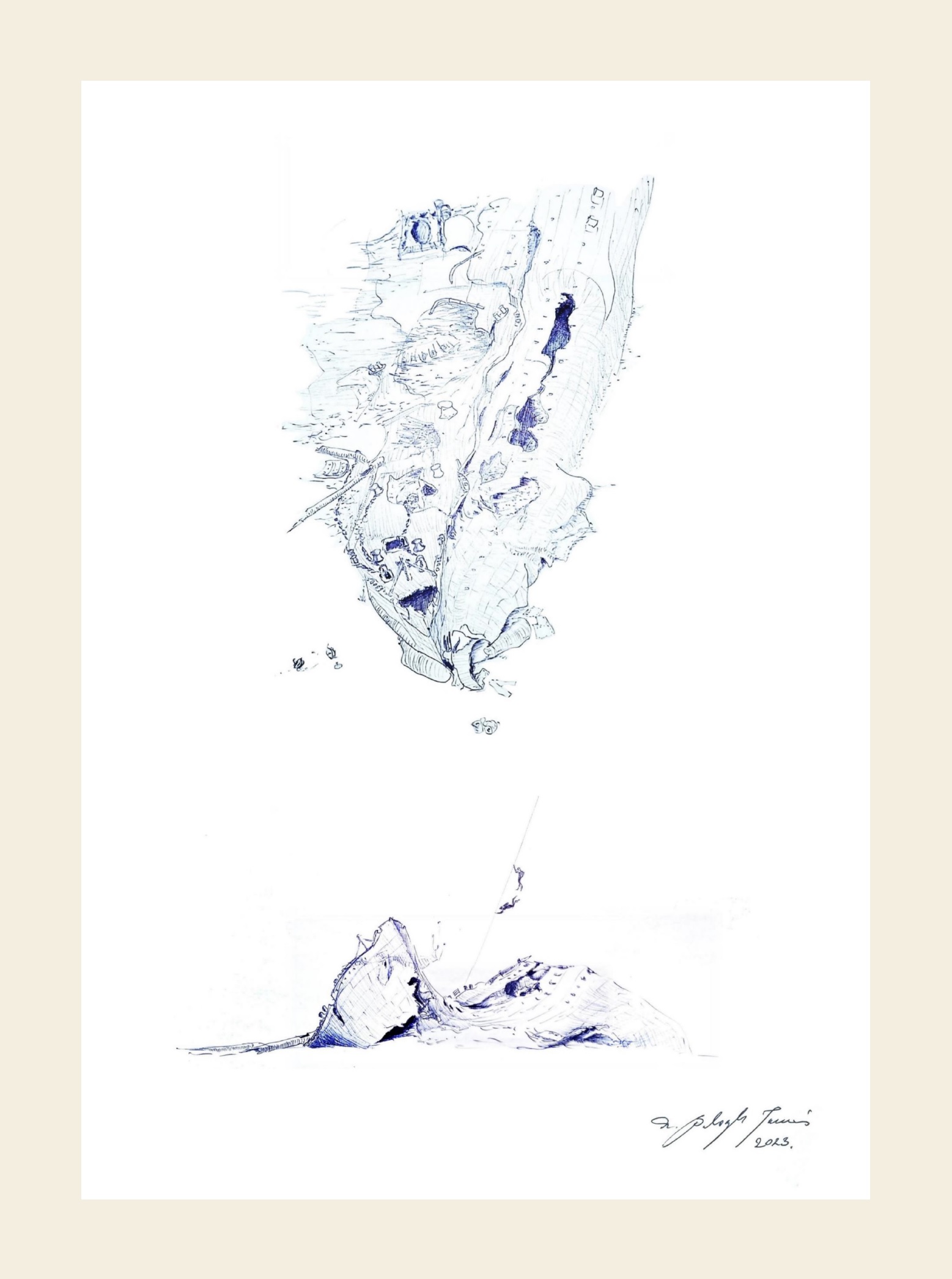
Fig. 5: An overview of the wreckage of the LUSITANIA seen from the bow in 2023. Created by Dr. Tamás Balogh © 2023.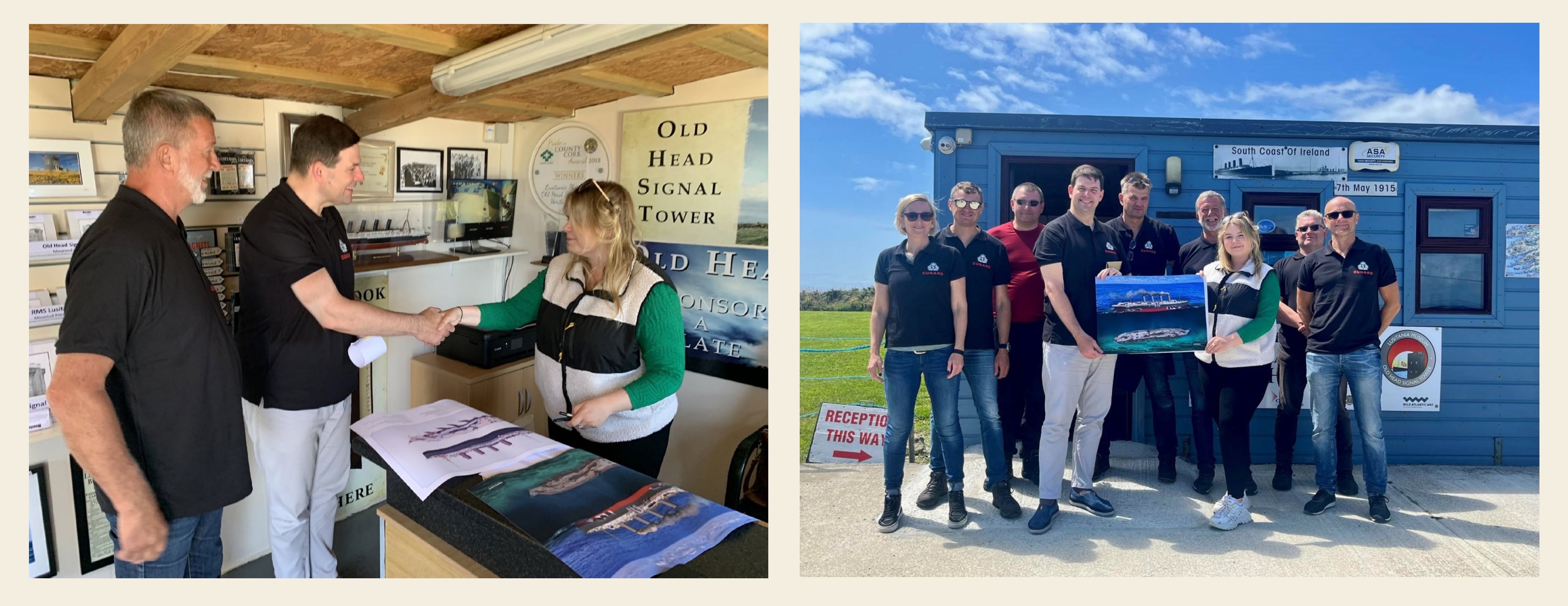
Fig. 6: Tamás Balogh presents his images made of the LUSITANIA ocean liner and its wrecks to Shannon Forde, director of the Lusitania Museum & Old Head Signal Tower (owner o the wreck), in the company of the expedition leader, Stef Teuwen (left), and the ceremonial handing over of the images together with the members of the expedition in front of the ticket office of the Museum (right).
It would be great if you like the article and pictures shared. If you are interested in the works of the author, you can find more information about the author and his work on the Encyclopedia of Ocean Liners Fb-page.
If you would like to share the pictures, please do so by always mentioning the artist's name in a credit in your posts. Thank You!
-
Húsz éves a National Geographic Magyarország
-
Tudósítás a KAISER FRANZ JOSEF I. cirkáló roncsainak 2023. évi kutatásáról
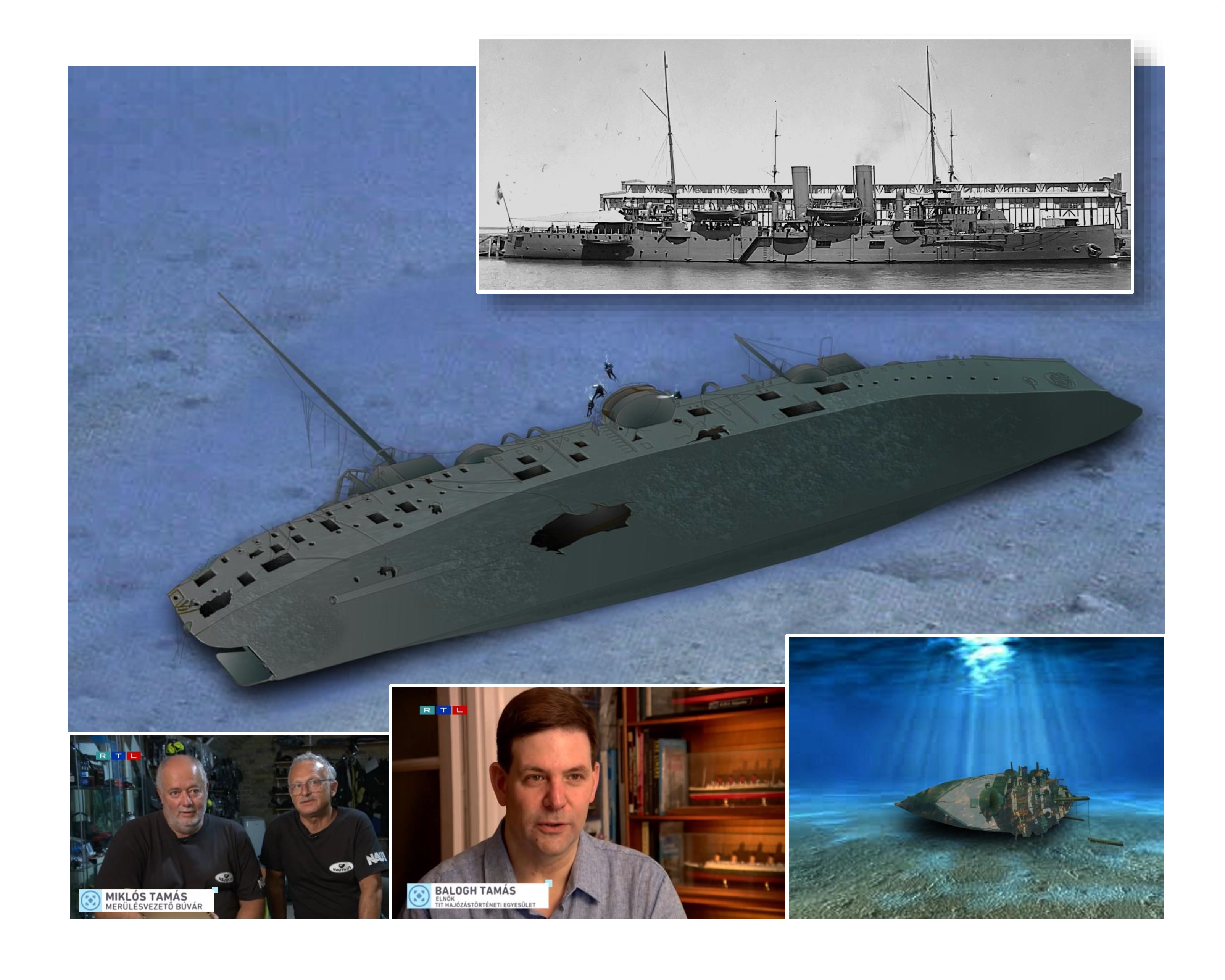
Az RTL Klub „Fókusz” c. műsorának 2023-07-12-i adása „Magyar roncskutató búvárok történetei” címmel közölt riport-műsort a KAISER FRANZ JOSEF I. cirkáló roncsaihoz Miklós Tamás által vezetett 2023. évi expedíció kapcsán (a cirkáló roncsait első ízben 2008-2011 között kutatta Czakó László, akinek munkáját fia, Czakó Ádám 2013-ban folytatta). A műsorban a 2023. évi expedíció vezetője, Miklós Tamás és merülőtársa, Farkas Zsolt mellett nyilatkozott egyesületünk elnöke, Dr. Balogh Tamás is, aki a 2008. és 2011. évi expedíciók történeti-műszaki szakértőjeként kapcsolódott be a kutatásba. A műsor elérhető: itt.
További információk:
1) A 2008. évi expedícióról Egyesületünk Hírlevele 2008/1-2. számának 10-15. oldalán: itt.
2) A 2009. évi expedícióról Czakó Lászlótól az "Örvények titkai" c. búvárrégész blog 2009. május 14-i posztjában: itt.
3) A 2011. júniusi expedícióról Czakó Lászlótól a "Búvárinfo" c. weboldal 2011. szeptember-októberi számában: itt.
4) A 2013. évi expedícióról Balogh Tamástól Egyesületünk honlapján és Czakó Ádámtól a "Karsztvíz Sportegyesület" weboldalán.
5) Balogh Tamásnak a hajó történetét feldolgozó kéziratáról: itt, s az osztrák-magyar hadihajózási könyvsorozatában a cirkáló testvérhajója, a KAISERIN ELISABETH történetéről megjelent kötetéről: itt. -
Stunning new album shows history of Scandinavian shipwrecks
I had a pleasant surprise this week when Danish diver and underwater photographer René B. Andersen sent me some photos showing a few pages of his new book. The photos shows pages with the wreck drawings I made of the shipwrecks visited by the 2016 Jutland Centenary Expedition in which we were both participated. The drawings provide an overview of the shipwrecks presented by René's stunning underwater photographs in the new two-volume book on the shipwrecks of Scandinavia
The book, titled "Legends Beneath the Waves - Scandinavia I. II." was published in November 2022. Its authors are the Danish underwater photographer René B. Andersen and the American Andrew Marriott, the editor of DivePhotoGuide, a portal specializing in underwater films and photos, himself a diver.
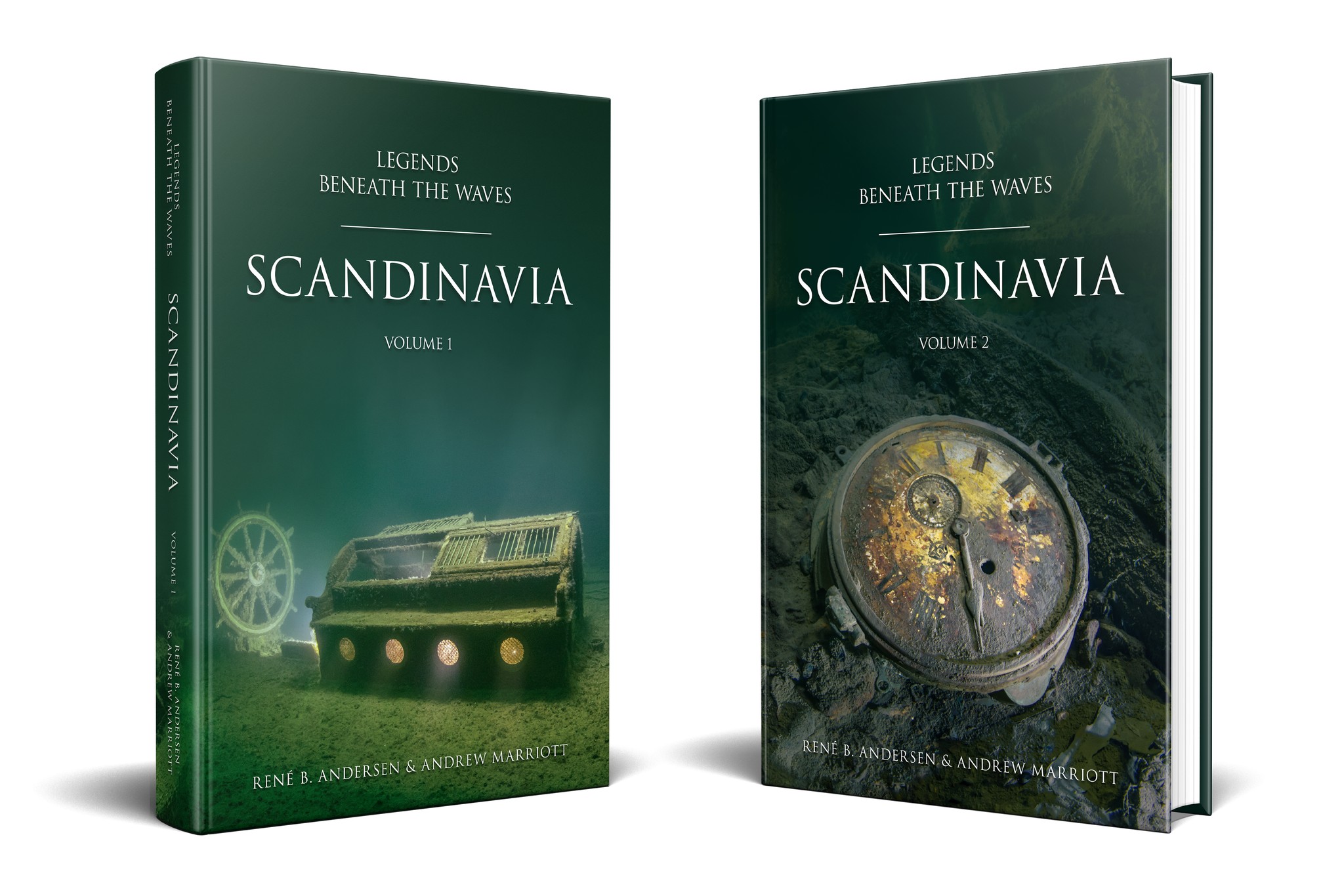
The two-volume work is full of the most amazing underwater wreck photos, taken in seven major regions of Scandinavia and showing 60 shipwrecks: 1) 5 shipwrecks in the Åland Islands, 2) 8 shipwrecks on the island of Gotland, 3) 12 shipwrecks in Skåne and Rügen, 4 ) 7 shipwrecks in the Skagerrak and Kattegat regions, 5) 5 shipwrecks in Jutland, 6) 15 shipwrecks in southern Norway (in the region of Kristiansand, Bergen and the Sognefjord), and 7) 8 shipwrecks in Central Norway (in the region of Alesund and Midtgulen).
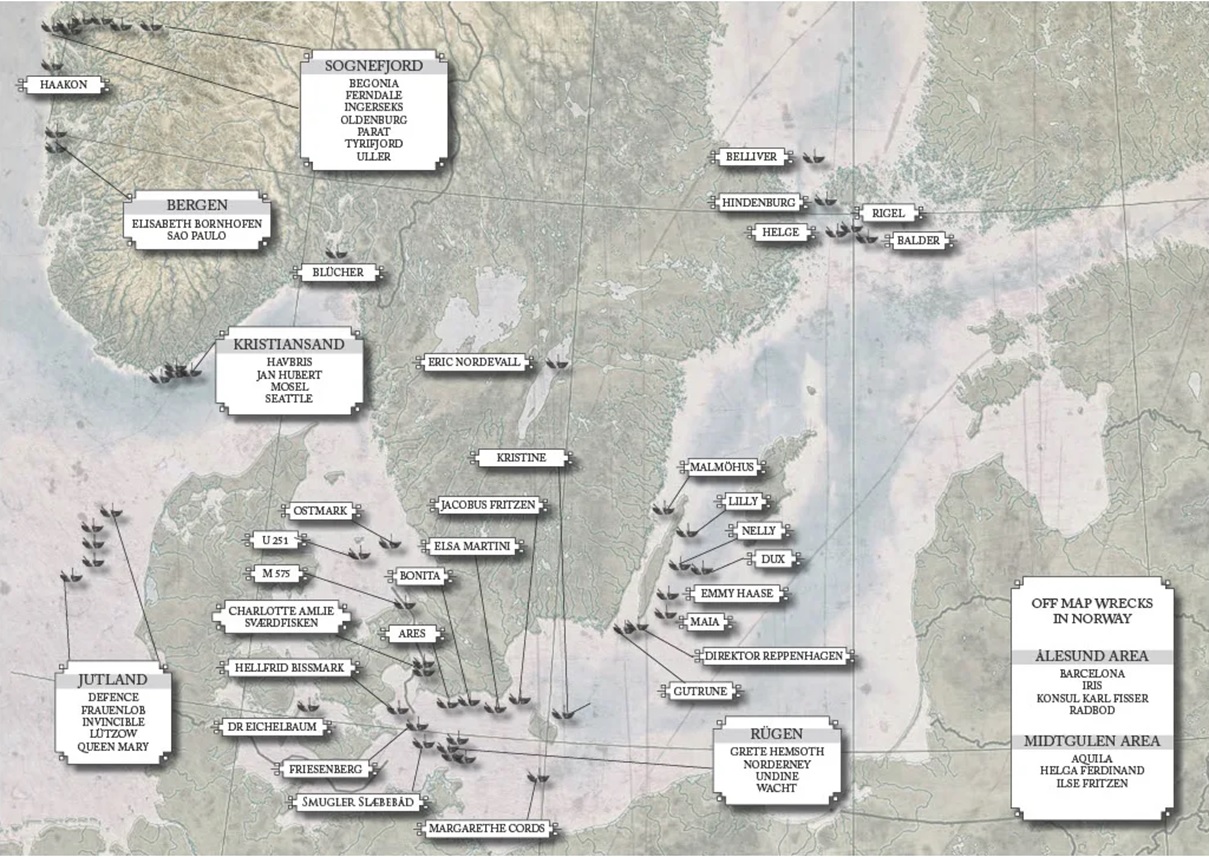
The underwater shots is complemented by stories and background information based upon the results of thorough historical research. The wrecks presented in the book lie at a rather great depth, and their approach was possible with use of rebreathers and at the cost of many hours of decompression.
The books are in A4 format, full of color pictures and both have 272 pages, so they weigh 4.5 kg. It's a heavy but all the more beautiful read... I'm glad I could contribute to its creation.
Big congratulations to the creators!
More information about the book:
https://www.youtube.com/watch?v=ccKUuWwznik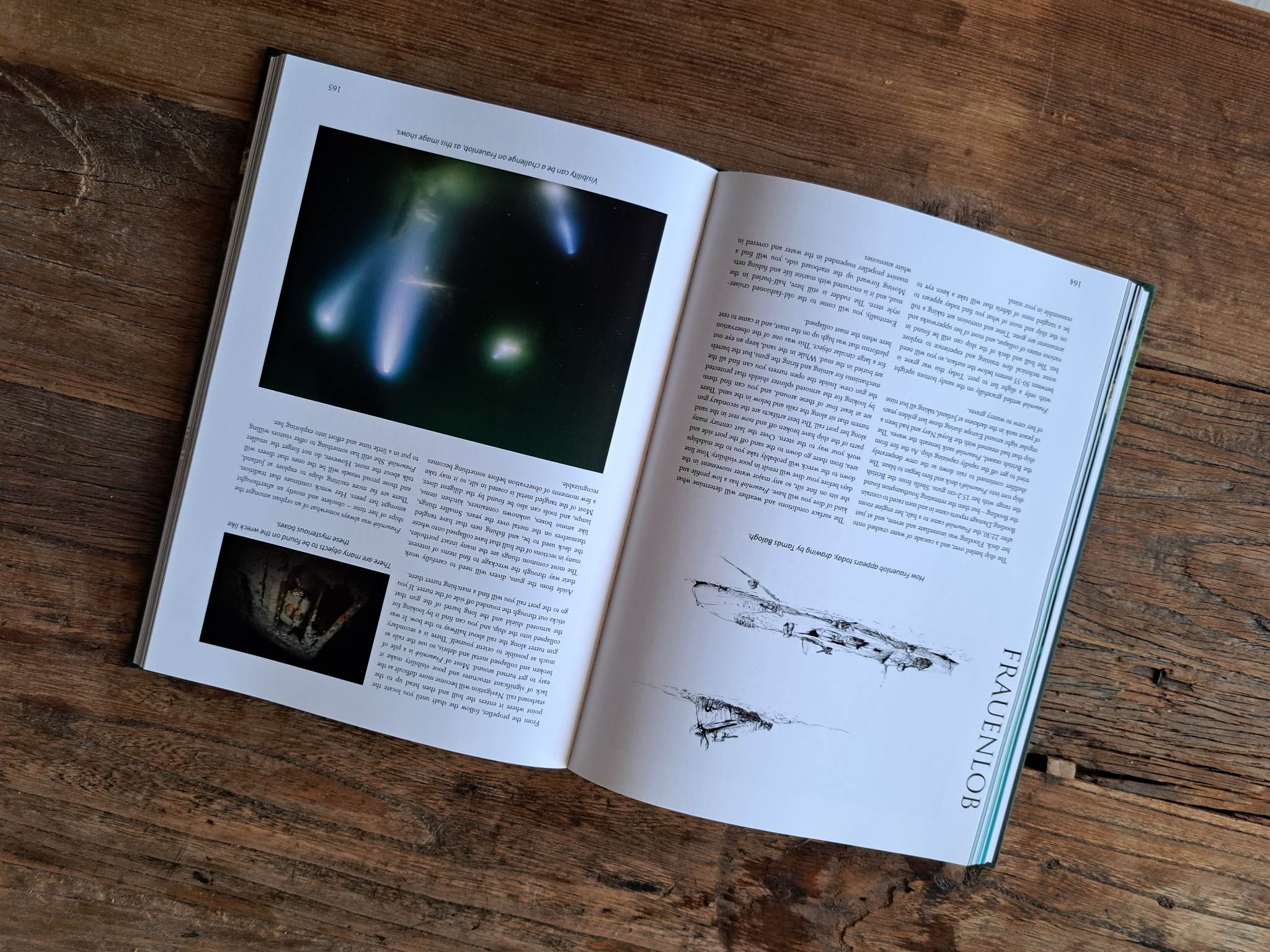
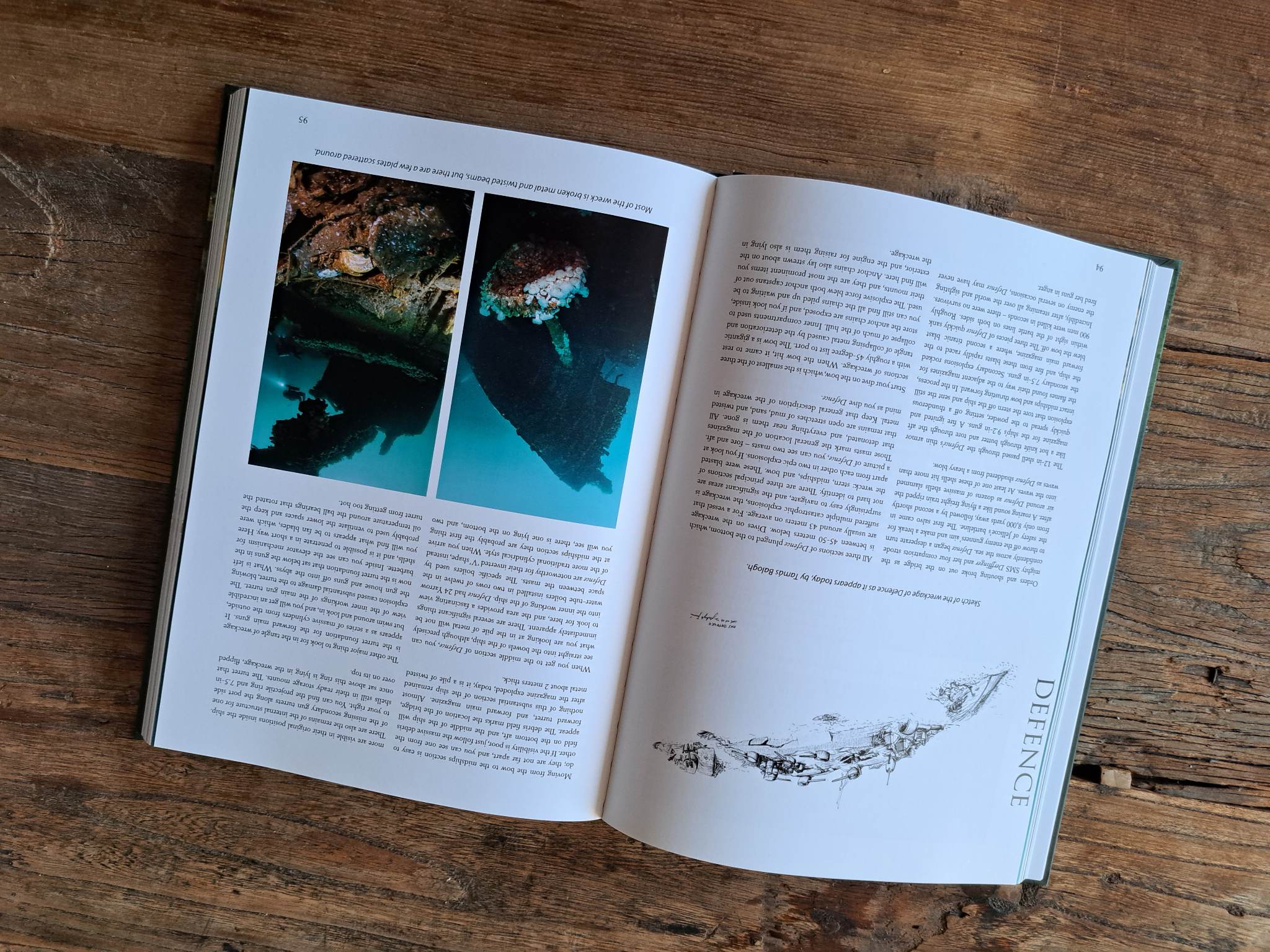
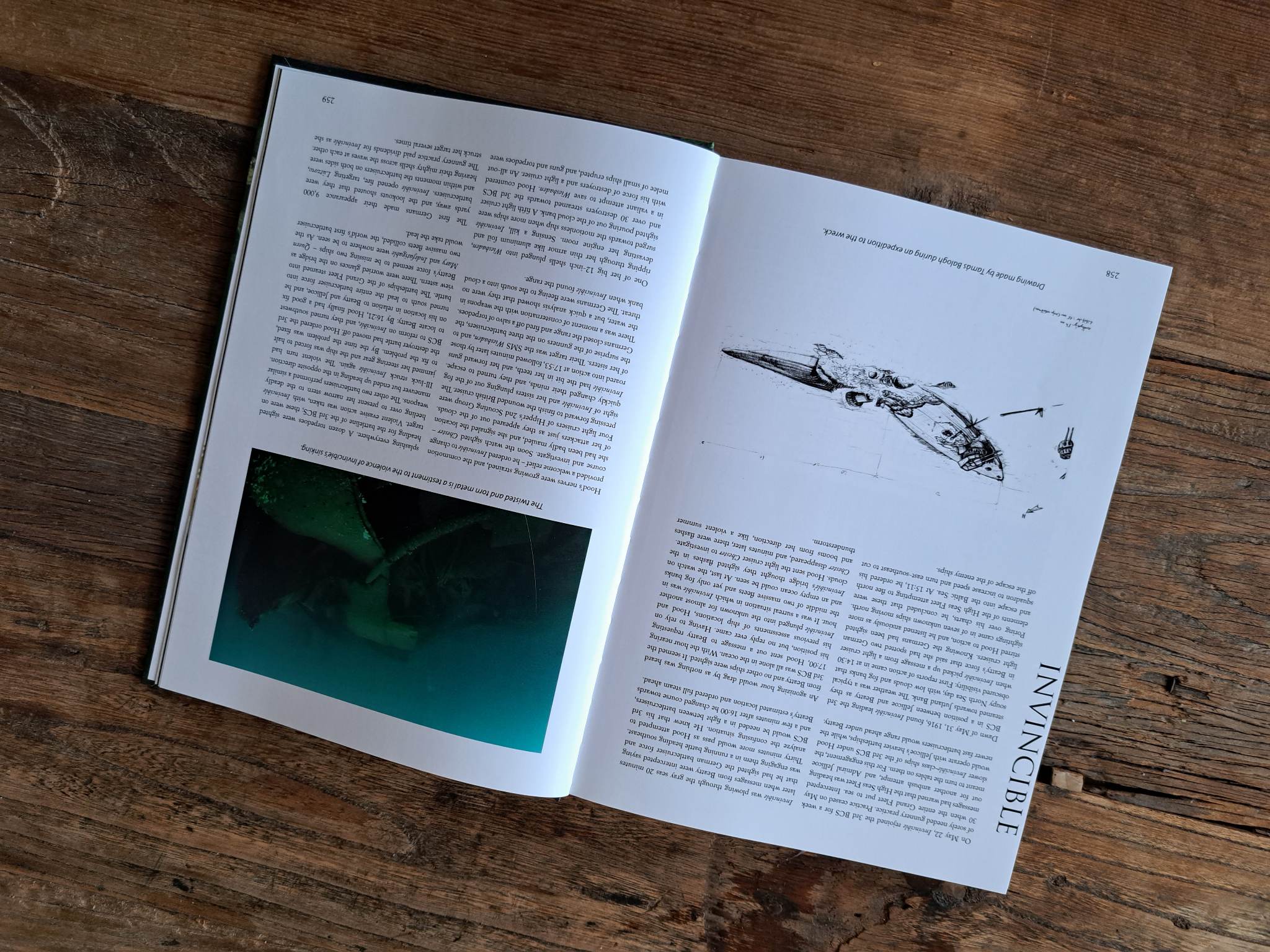
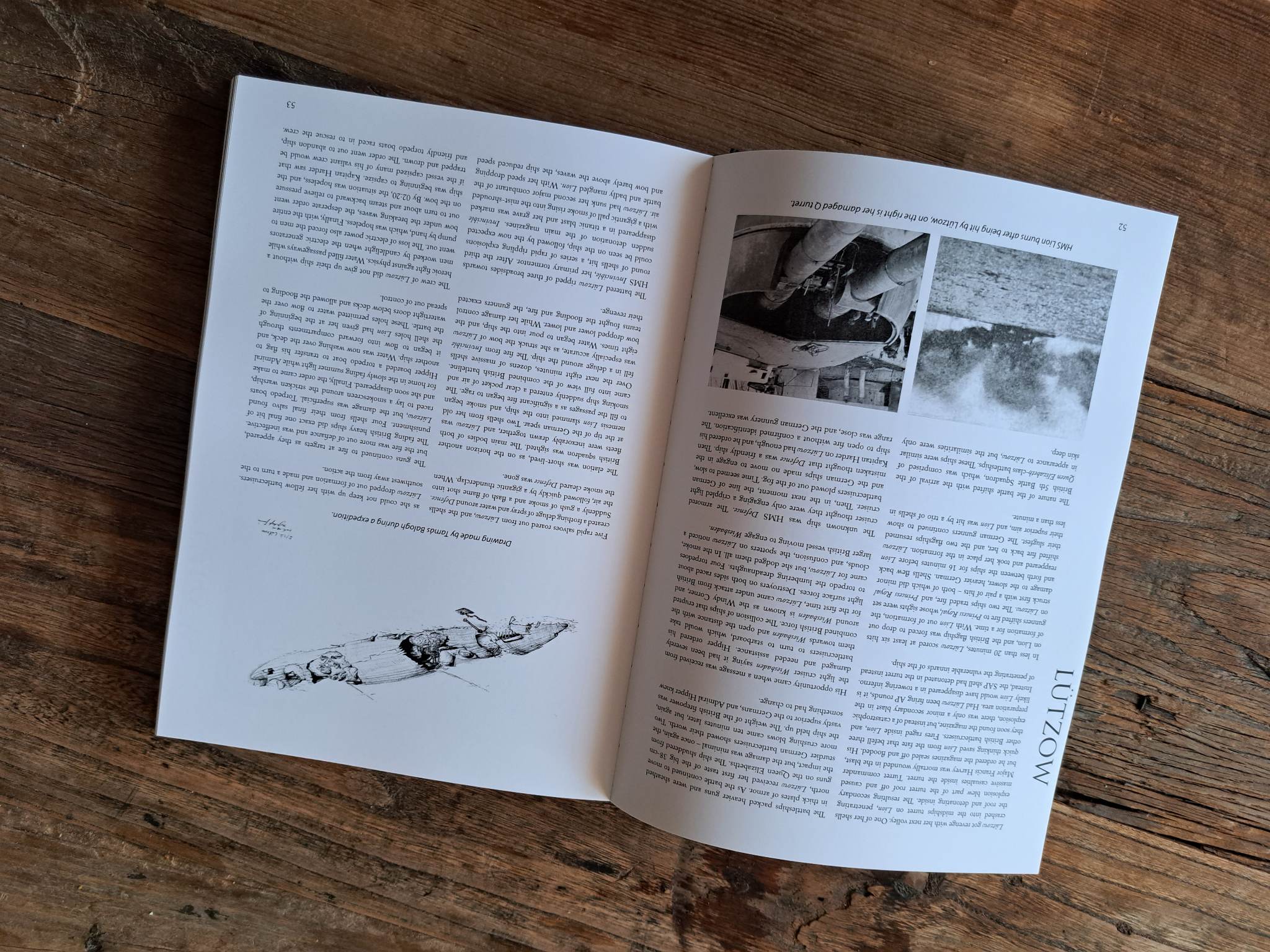
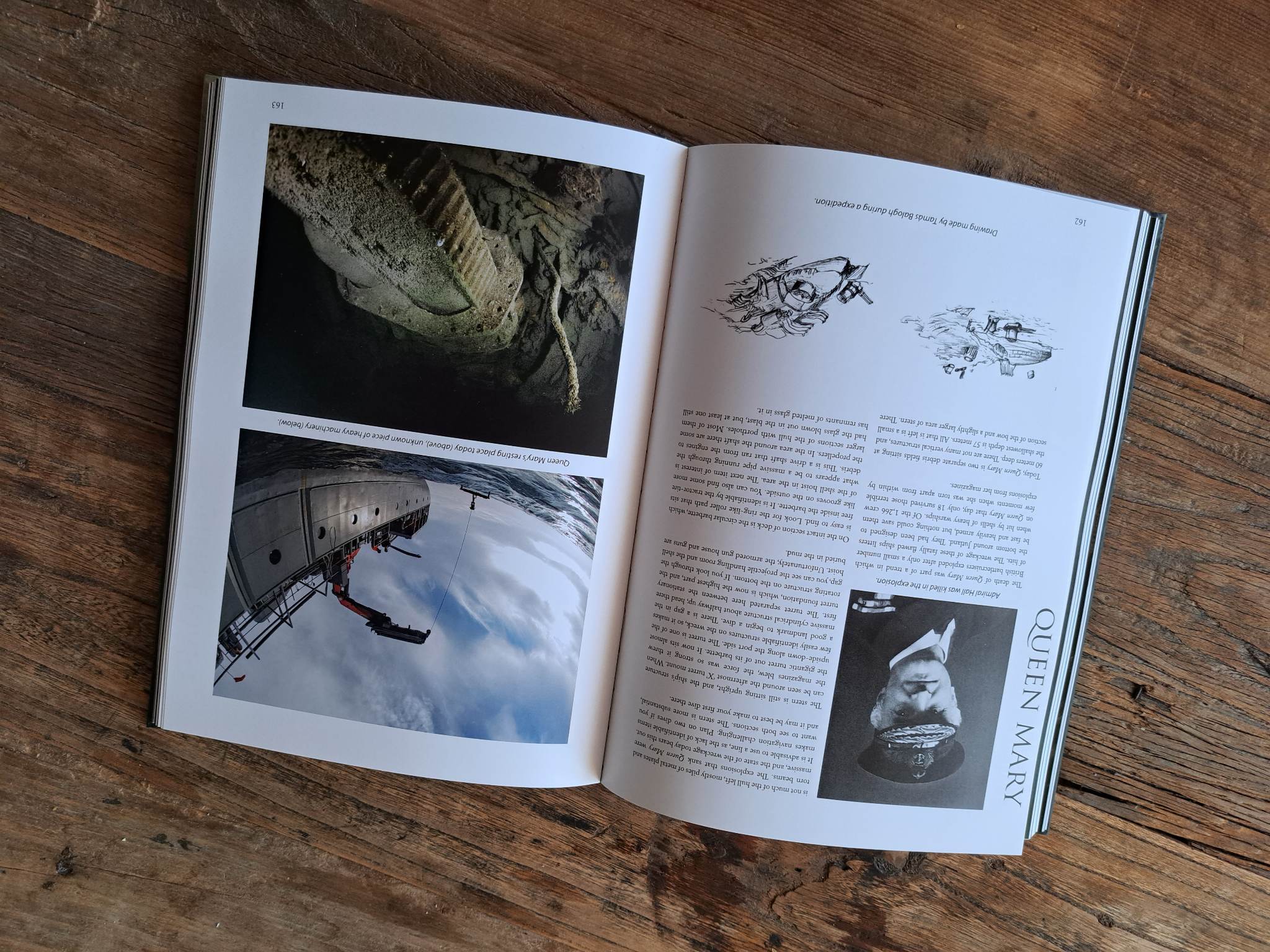
-
Encyclopedia of ocean liners - Insight behind the scenes
As a result of twenty years of research and digital reconstruction activities, Dr. Tamás Balogh - Tom - created the world's first digital ocean liner collection, which contains of about 1 000 digital blueprints of about 600 ocean-going passenger ships from the period between 1830 and 2003. This is not only the only collection of its kind in the world, but also the largest and most accurate collection (with virtually all ocean liners built or planned during this period) based on original shipyard blueprints and models. It is the Encyclopedia of ocean liners which offers a multi-threaded connection to maritime history outreach, written and visual storytelling - by researching the history of ships and their wrecks, publishing books, articles, studies, and by applied and artistic graphics and by supporting film production. What is this exactly and who is behind it? Be an insider!

I.) About the author:
Dr. Tamás Balogh is a professional lawyer on International Law and Law of the European Union, on social security law and on monument protection and cultural heritage law. He is a shipwreck researcher, maritime history writer, graphic artist, and translator.Public service activities:
2000-2005: He was the representative social security sector in the delegation negotiating of the bilateral social security agreements signed by Hungary. In 2004 he was a member of the sectoral expert group carrying out legal harmonization activities related to EU accession. He received an award from the Minister of Health for his work.
2005-2013: He was the head of the EU development policy unit in the health sector, the leading member of the expert group responsible for the planning, EU negotiation and domestic implementation of the HUF 351 billion EU-supported health development program between 2007-2013, and expert in cooperation of cross-border health care.
2014-2018: He prepared the legislation announcing the management plan for the cultural World Heritage sites of Hungary (Hollókő, Tokaj, Pannonhalma, Pécs).
2016-2017: He was the Hungarian delegate of the UNESCO board supervising the implementation of the international convention on the protection of underwater cultural heritage.
2019-2022: He was the leader of the Legal Directorate of the Budapest University of Technology and Economics.
2022-2023: He was the Chancellor's Commissioner for International and Development Affairs at the Budapest University of Technology and Economics.
Tourism development activities:
2014:, At the initiative of the Hungarian Limes Association, together with Dr. Árpád Karsai – the vice-president of the Association of Tourist Advisors – he made the preliminary plan of the National Limes Cultural Tourism Development Concept, i.e. a coherent cultural and heritage tourism offer connecting the ancient Roman and other attractions along the Hungarian section of the Danube with each other and with the natural heritage of the Danube. More information here and here.
2014-2018: He was a walking guide of Beyond Budapest, a company that organizes thematic city walks, for which he developed a walk that explores the rich nautical heritage of the Hungarian capital, situated on the banks of the Danube River.
Maritime history edutainment activities:
2007- : He has been the president of the Hungarian Society of Maritime History, Modeling and Tradition.
2017-2020: He was the head of the Scientific Committee of the Hungarian Diving Association.
2017-2021: He was member of the Scientific Committee of the International Association of Underwater Activities (CMAS).
2018: The Minister of Defense of Hungary recognized his edutainment work on naval and maritime history by awarding him the highest honor that can be awarded to civilians, the First Grade of the Distinguished Title for National Defense.
Translating activities:
In his spare time, Tom translates literature of maritime history and marine inspired poems of Anglo-Saxon poets into Hungarian (the latter published by the Hungarian Litera-Túra Magazin: 1., 2., 3., 4., 5., 6., 7.).

II.) A profession evoced by the maritime historyAs a maritime historian and wreck expert Balogh Tamás (Tom) became captivated by Titanic after seeing the artwork of Willy Stöwer Sinking of the Titanic and he bacame committed for a life to the collection and dissemination of knowledge of maritime history and underwater exploration. Tom is the president of the Hungarian Association of the Maritime History, Modelling and Tadition, and a member of R.M.S. Titanic Hungarian Research Group, he has 20 years of expertise in underwater exploration, in addition to a solid background in history, museums, and outreach through media, film, and publications. Tom is known as a respected, passionate expert who’s prime directive is helping keep maritime history alive and accessible to everyone.
Explorer: Tom is historical expert of international wreck-diving expeditions.He took part in the exploration of 16 shipwrecks as a historical and technical expert on Hungarian and international diving expeditions for the research of sunken ships. By finding and processing of archival documentary and images, by planning and analysing of on-site surveys, by exploratory description of the wrecks and wrecksites, and by the preparation of reconstruction drawings, he is active participant of the explorations: in the Adriatic Sea (in case of 6 shipwrecks of the former Austro-Hungarian Navy), in the North Sea (in case of 7 shipwrecks of the Jutland battle), and in the Atlantic (in case of 3 wrecks of the World War I), which included 1 dreadnought-type battleship, 4 battlecruisers, 5 cruisers, 1 destroyer, 1 torpedo boat, 2 submarines and 2 ocean liners. Learn more about his blog posts related to the wreck-diving here.
Storyteller: In addition to wreck research, he helps in various ways continue to advance the discipline and bring more history alive for scholars and the public alike.1) He is the author of several Hungarian and English language maritime history works - independent volumes (8), articles (56) and blog posts (405). His articles published in the Hungarian permutation of the BBC History (10), and the National Geographic Magazine (7) and on the magazine's website (25). Tom’s recent book titles include:
a) In the shadow of the Titanic (in Hungarian) about Dr. Árpád Lengyel (the Hungarian doctor, who was in charge on board of the Carpathia during the rescue of Titanic survivors) together the doctor's granddaughter, published in 2012;
b) Dutch TITANIC – history of the s.s. STATENDAM about the biggest ocean liner ever built for the Netherlands published in 2018 and launched exactly on the day of the centenary of the ship’s sinking in Belfast, in the former headquarter-building of the Harland & Wolff Shipyard (here are some sample pages from the Hungarian version of the book);
His next job is the "Liners - great pictorial encyclopedia of giant steamships" featuring the history of ocean-going passenger steamers from 1838 to 2003. More info - synopsis, some sample pages, an interview and a report - here.2) He is the director, writer and graphic designer of the Association's 22 exhibitions (4 permanent 18 temporary).
3) During his 20-year career, he has been privileged to host the popular international documentary series the Secrets of the Lost Liners (2022), and Shipwreck Secrets (2019), furthermore the Hungarian miniseries Shipwrecks of the Monarch’s Fleet (2004) and numerous Hungarian documentaries as specialist responsible for historical & engineering analysis, technical drawing & he is a regular participant in the edutainment programs of Hungarian television- and radio channels.
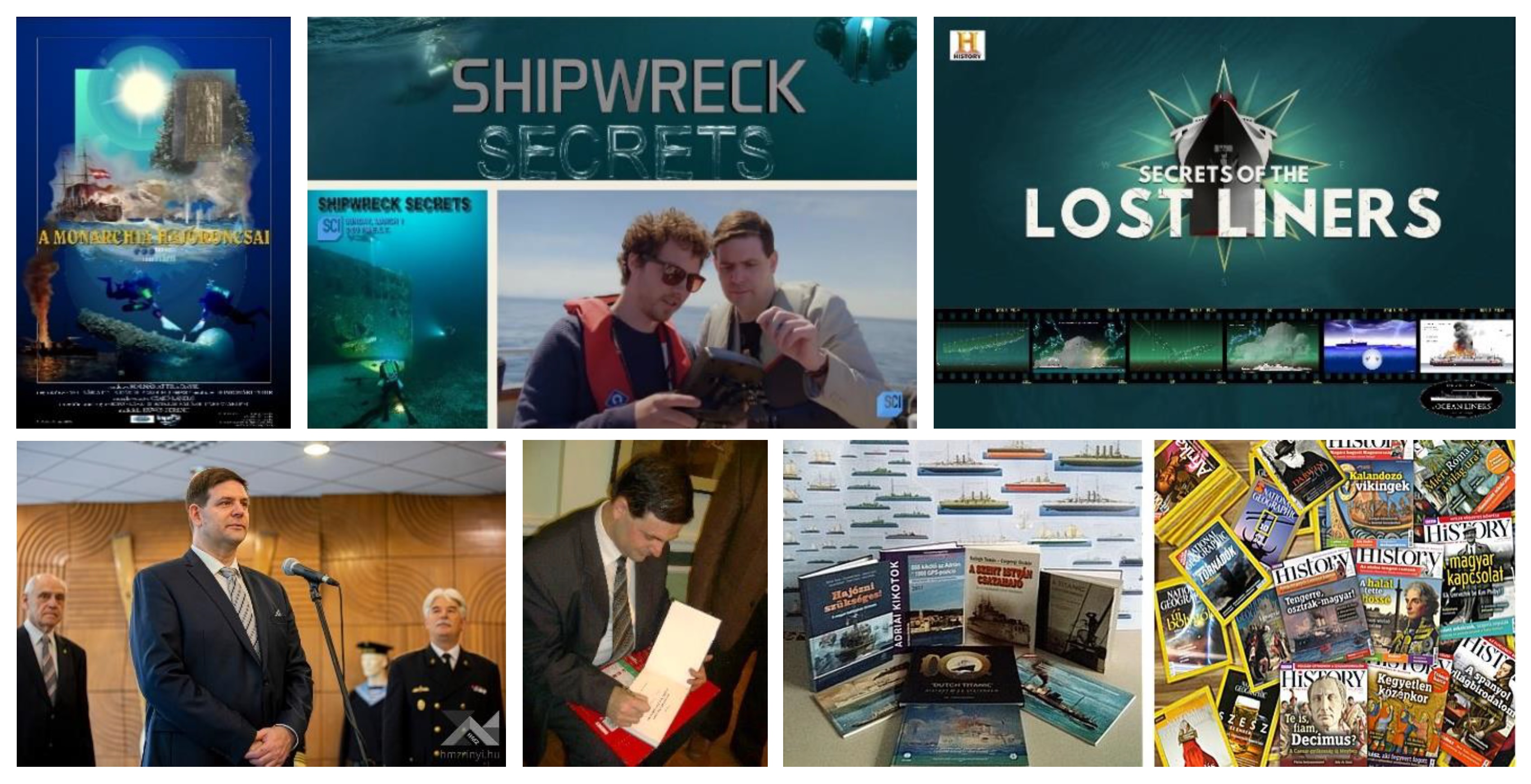
III.) Digital modelling of ocean linersTom – using by cutting edge digital imageing technologies – creates the world's largest and most accurate digital collection of ocean liners and developes provision of services (design, construction, film post-production), that are suitable for the extensive use of the collection, both in filmindustry (commercials, documentary, cinema), both in public display (exhibitions, museum pedagogy).
Until the advent of civil aviation, the only means of transportation between continents on the surface of our planet covered with seas was provided by ships. Of these, high-capacity, fast and most seaworthy ocean-going passenger ships are also of paramount importance, as they were a vital means of communication overseas in times of peace and war. In addition, the most industrially developed nations considered an ocean-going passenger ship built with outstanding expenditure as a floating ambassador for their country, a “product expo” praising the service capacity of national industry, and a measure of technical value, so these ships became national symbols. In view of all this, the history of ocean liners was closely intertwined with the history of mankind, in which these ships sometimes played a decisive role.
As a result of twenty years of research and digital reconstruction, Tom created the world's first comprehensive collection of digital ocean liner profile drawings, which contains 1,000 digital profiles from 1830 to 2003 for 600 ocean liner passenger ships from 100 shipping companies in about 20 countries. It is not just the only such collection in the world, but also the largest and most accurate collection (with the most of all that ocean liners which completed or planned during this period) based on original shipyard blueprints and builder’s models.
The collection reliably serves three types of needs:
Demonstration:The purpose of the project is the production of ocean liner profile-drawings processed in various ways and designs about historic ocean liners of the 19th and 20th century, to visually illustrate the history of ocean liners, with the help of high-quality - accurate and detailed - blueprints, which are the reminiscents of the simplified and coloured versions of contemporary shipyard blueprints, general arrangement plans and cutaway diagrams, made for representational purposes.
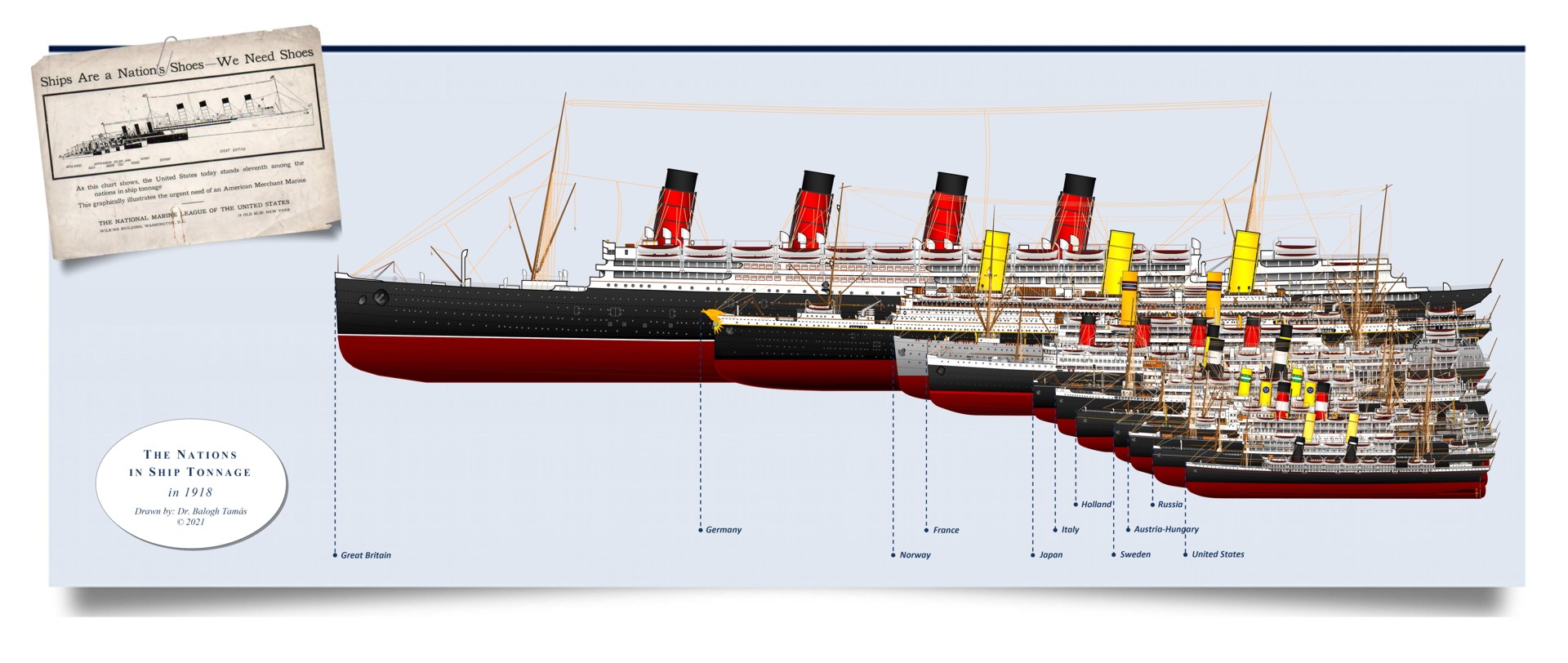
Publication and applied art:In the project will also be published a series of profile drawings in a kind of type-book, supplemented with a professional ship biography, and also presenting all the ship’s conversion variants as well. The production of posters (eg thematic billboards showing the evolution of ocean liners, the ocean liners of different shipping companies, or the 14 fourstackers, etc.) is also part of the project. These posters and blueprits can be ordered.
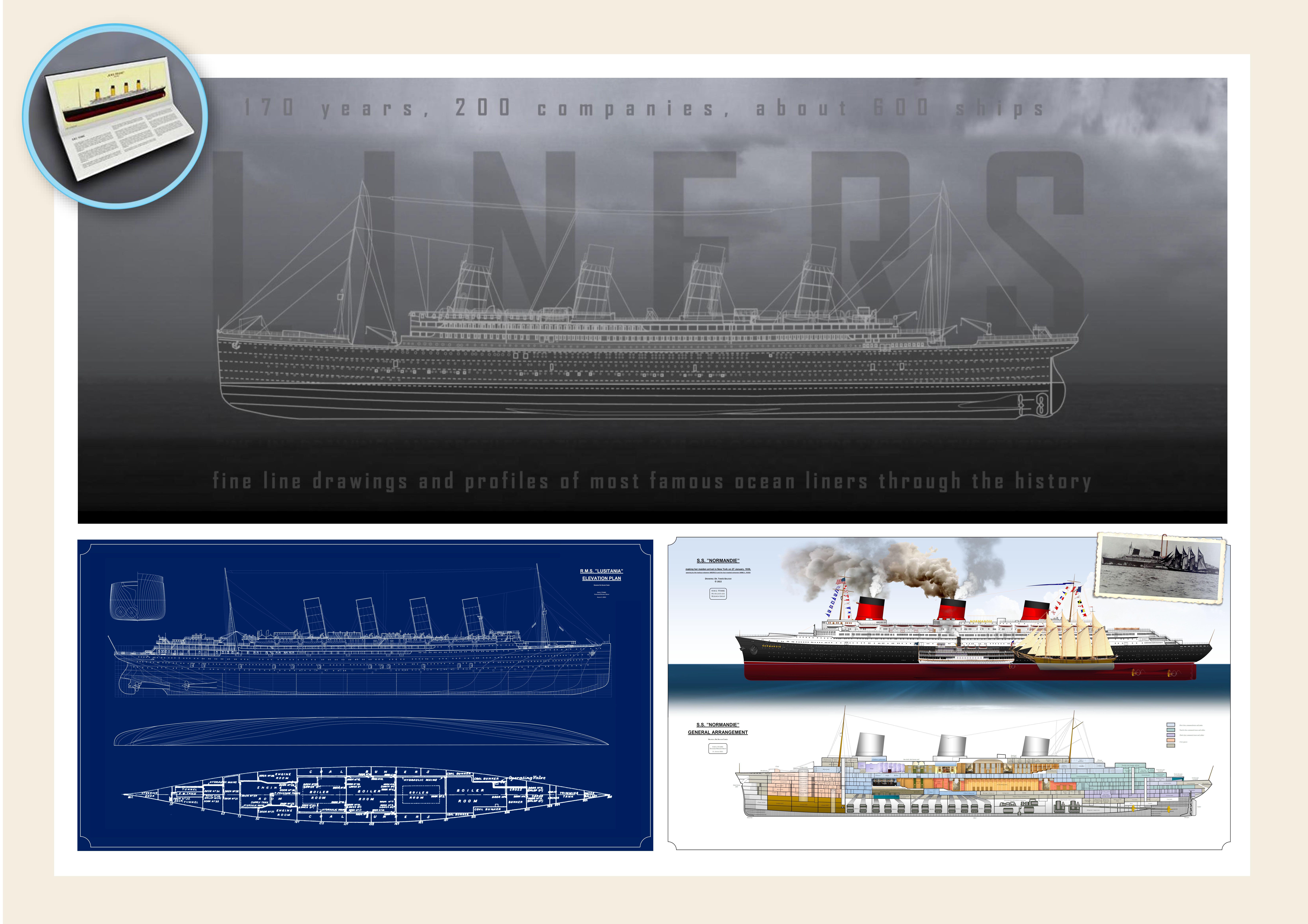
Support for film production:The project also aims to offer a service for international film industry with benefits (saving production time and costs) by various 2D animations (1., 2., 3., 4., 5., 6.) and/or 3D ocean liner-models, that can be easily and quickly used in film production as a pre-fabricated element or asets, in the market for feature films, documentaries and commercials, but even in the market for interactive museum animations. The production of post-production, including 3D animations, is typically the biggest item in the film production budget, and the mass availability of uniformly high-quality, yet accurate and authentic representations reduces these costs.

This service has some potencial benefits as follows:1) Today's trends in documentary filmmaking confirm that the millennial generation, which makes up a significant proportion of the documentary consumer community, focuses primarily on documentaries that, in addition to a strong narrative, offer an authentic appearance.
2) There are many documentary filmmakers who work with technology and budgets optimalized for making the currently popular micro- and short-documentaries (with mixed quality animations - ordered from stock or created by different teams on a mixed platform - or not use animations at all). However, this production technology cannot guarantee the authenticity of point 1).
3) In comparison, the offered service guarantees a uniform appearance for all ships (for example in entire series). As part of the service, 500 ocean liners are available processed in the same quality (by clicking on the link above, you can access the pdfs that contain the catalog of ocean liners currently available and could be selected for 3D model and animation). Thus, in productions, not only one, but virtually any ocean liner can be displayed relatively quickly in the desired quality (it is currently the largest such collection in the world). And beyond that, of course, Tom is able to make a similar display of any other historic ship (sailing- or steamship, merchant vessel or a warship). Depending on the budget, the production can be combined with a variety of 3D and 2D display options.
4) This avoids the quality risk of buying from stock, the disadvantages of lack of uniformity in multi-team animation. Tom's service guarantees a high-quality uniform look for entire series.
5) All ships in the service can be displayed even in headlines. And the service is also capable of allowing to make spectacular comparisons of the ships (for exemple in various episodes of a certain series).
6) The possibility of use can be supported by flexible tariffs which are able to tolerate to some extent the sensitivity of the productions budget, including the possibility if a film producer does not yet know at the time of the production process how many TV channels will purchase the production.
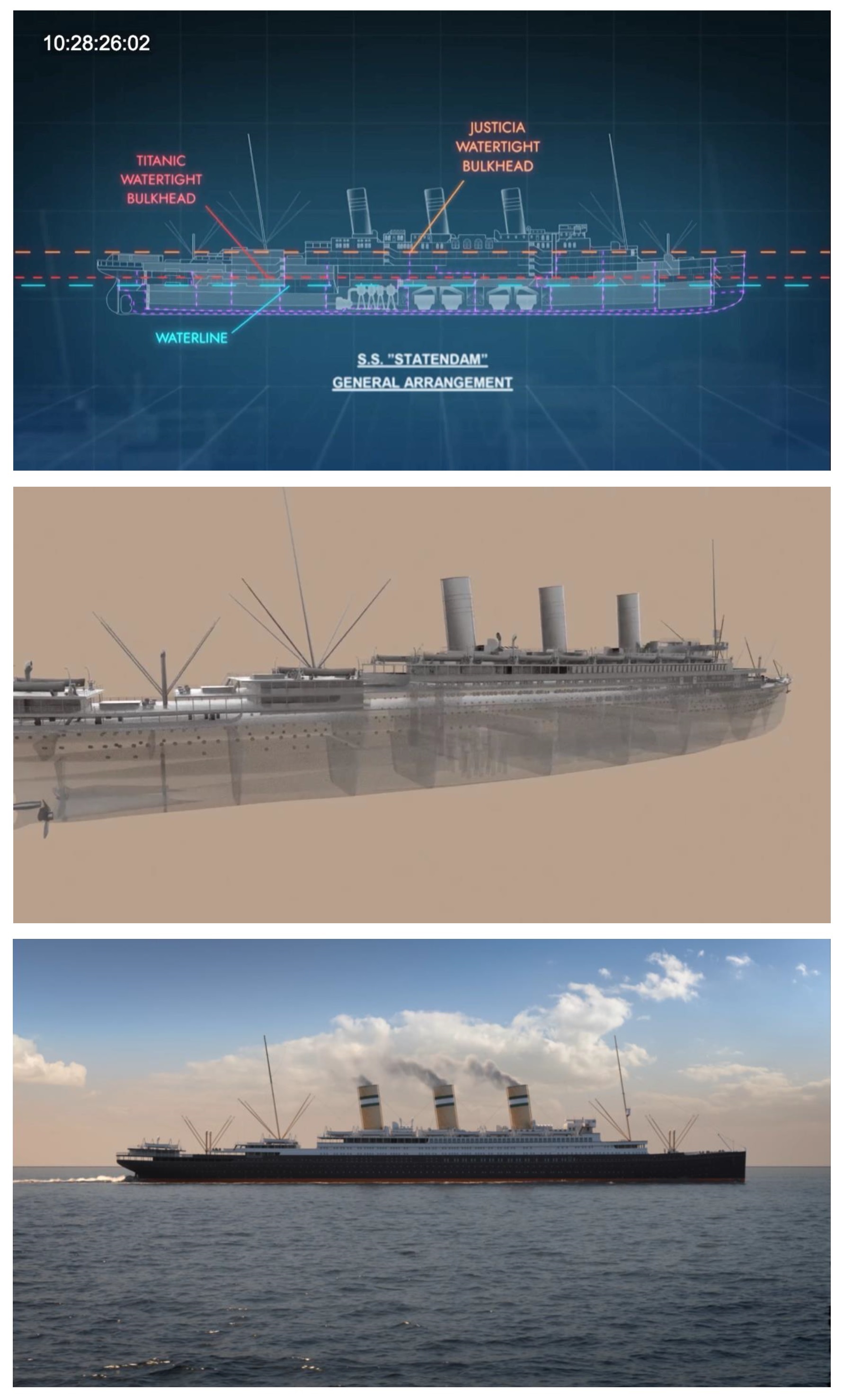
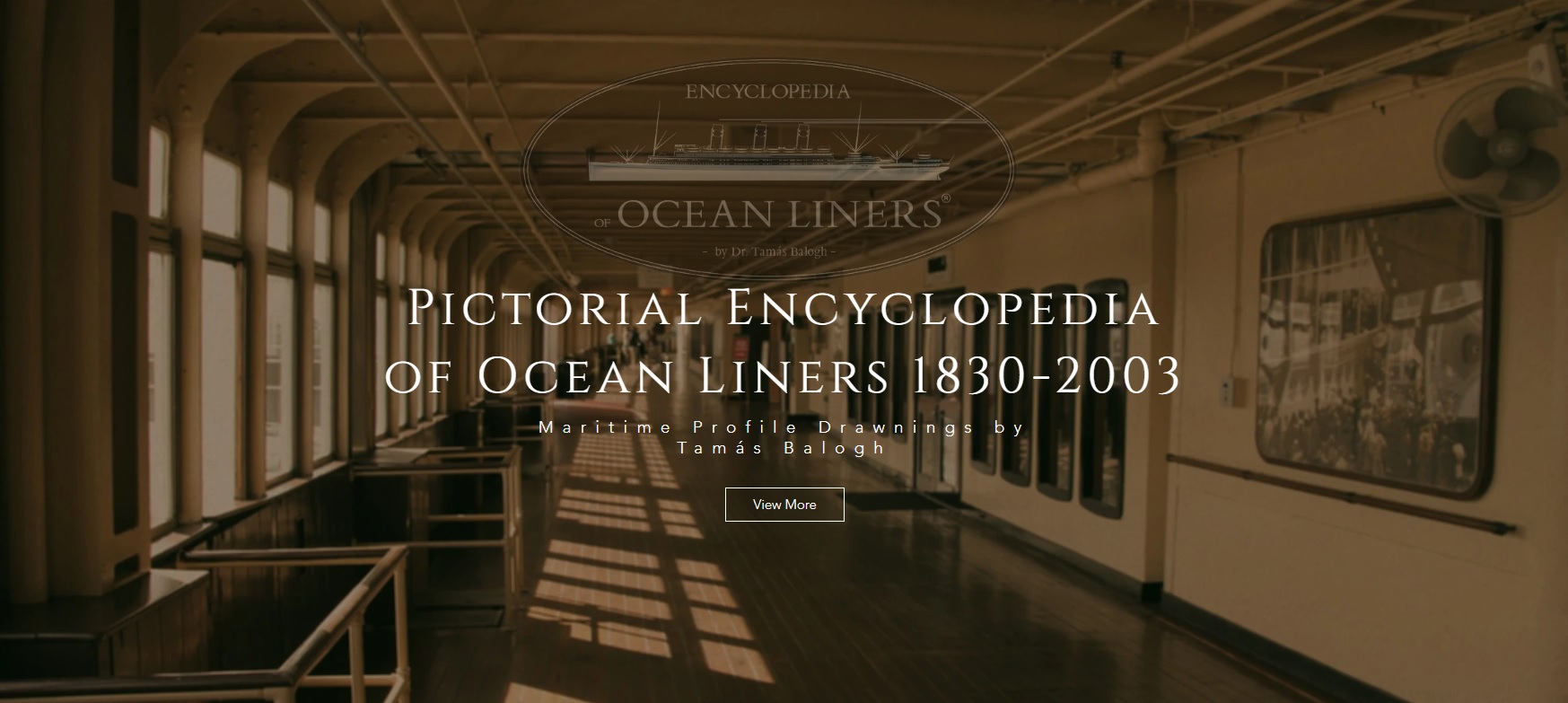
-
A LUSITANIA titkai - Előadás Szegeden
"A LUSITANIA titka. - Expedíciós beszámoló az 1915-ben elsüllyedt sorsfordító hajó roncsai kutatásának magyar résztvevőjétől." címmel tart előadást az elsüllyedt óceánjáró kutatásában résztvevő Dr. Balogh Tamás, egyesületünk elnöke, és kutatótársa, Könczöl Péter a Szegedi Tudományegyetem 26. Őszi Kulturális Fesztiválja keretében.
A LUSITANIA személyszállító óriásgőzös a TITANIC mellett talán a legismertebb hajó. 1915-ös megtorpedózása összefügg az Egyesült Államok belépésével az első világháborúba, ami megváltoztatta a háború és ezzel a történelem menetét. A harmincas évek óta eddig 14 kutatócsoport járt a roncsoknál, a 2022-ben lezajlott legutóbbi expedícióban pedig - amelyről a National Geographic Magazin is beszámolt - szegedi származású kutatóként egyesületünk elnöke is közreműködött a merülési célok kijelölésében, a helyszíni elemzésben és a roncsmező rekonstrukciójában. Az expedíció eredményei olyan kérdéseket is eldöntöttek, amelyekről a hajó elsüllyedése óta senki sem tudott semmi biztosat. Az előadás keretében a kutatók a helyszínen szerzett tapasztalatokról számolnak be az érdeklődőknek.Az esemény helyszíne: Szegedi Tudományegyetem, Klebelsberg Könyvtár, földszint AudMin. (6722 Szeged, Ady tér 10.). Időpontja: 2022.10.28. péntek: 18:00 óra. Az előadáshoz tartozó facebook-esemény linkje: itt.
Minden érdeklődőt szeretettel várunk.
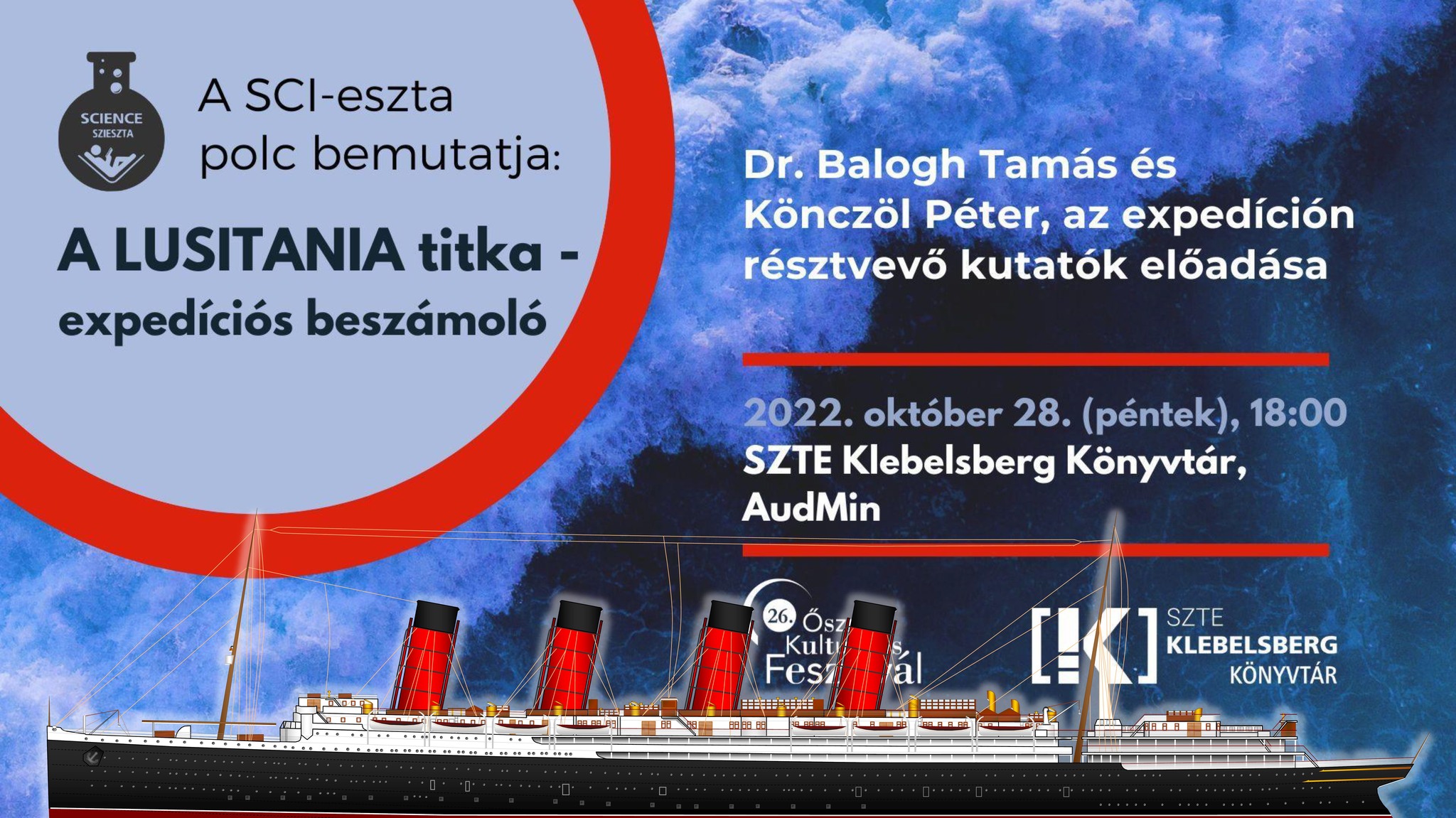
A rendezvény szervezői által az előadásról a helyszínen készített felvétel megtekinthető itt. Köszönjük!
-
A look at the drawing office - a documentary animation of ocean liners
On April 1, 2021, Max Barber, the creative director of London-based Born This Way Media Ltd., asked Dr. Tamás Balogh, a maritime historian, wreck researcher and author of the Encyclopedia of Ocean Liners, whether he join to the production of a new documentary series with six 60 minute-episodes, which has just entered the pre-production phase with the working title “Lost Lines - Palaces on the Ocean Floor”. Tamás Balogh joined the project as specialist of historical and engineering analysis, as well as the technical drawings and design, the details of which he gives an insight into below.
I.) What is the series about and how was it created?
When most people hear the word “ocean liner,” TITANIC comes to mind. However, eventually released as “Secrets of The Lost Liners,” the docmentary seeks to free the category from the shadow of this single ship and provide a credible picture of the design, services, and loss of the world’s largest ocean liners as a series of in-depth maritime history. The series shows thus the most famous trans-oceanic passenger ships - the CAP ARCONA (1927-1945), the NORMANDIE (1932-1948), the REX (1931-1944), the QUEEN ELIZABETH ( 1938-1972), AMERICA (1939-1994) and ANDREA DORIA (1951-1956) - that have sunk in the last 100 years as a result of war, accident or human error, and in addition to the historical chronology of events, the series give an overwiew about the evolution of ship-design and safety systems.
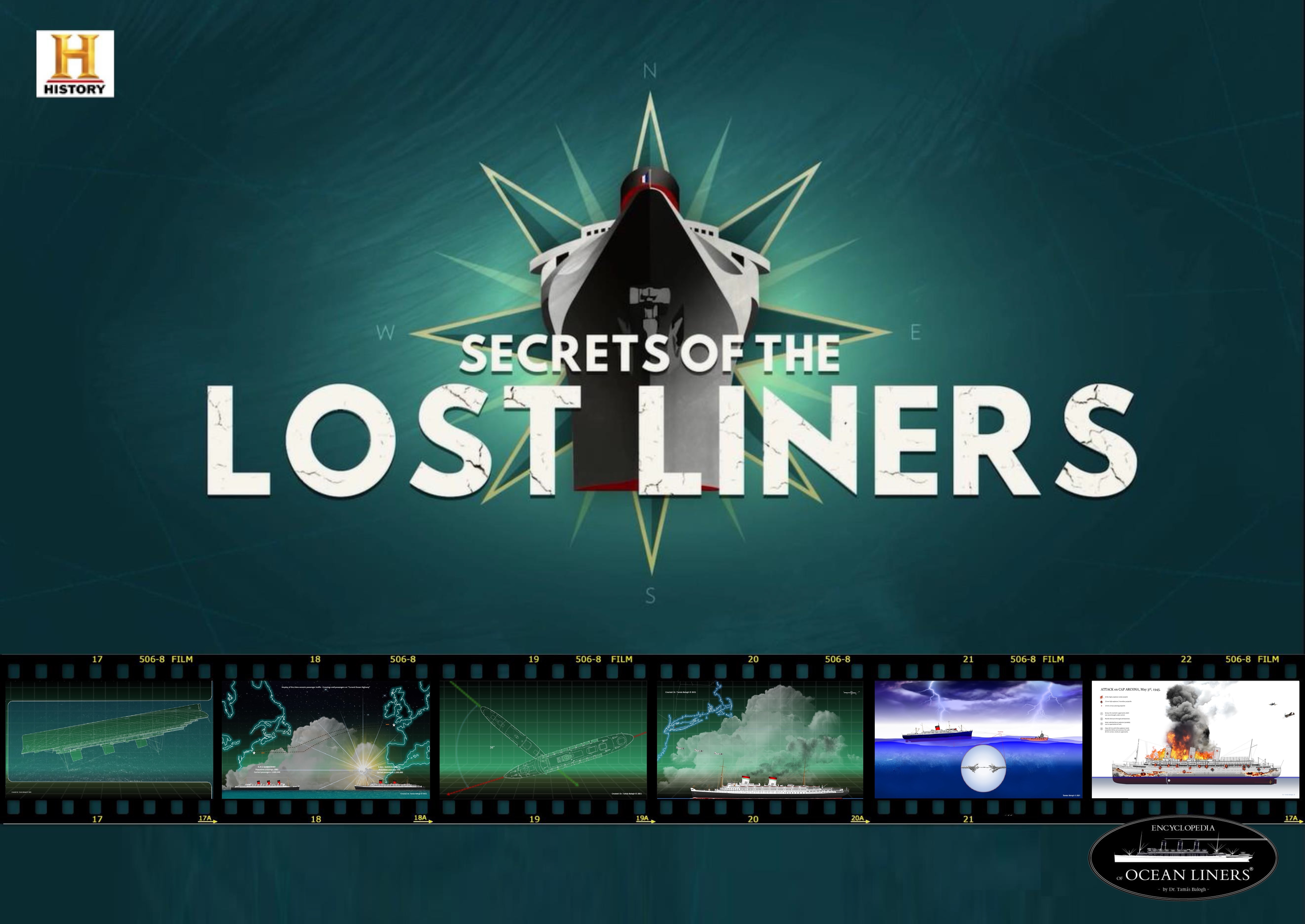
Fig. 1: The preview of the series and the first episode can be viewed here.
The series have been the result of a major transformation in the television market from June 2020 to November 2021, when Arrow Media of the United States created a new platform for documentaries and content providers in the United States and the United Kingdom, and Herbert L. Kloiber of Night Train Media in Germany has acquired British BossaNova Media Ltd, a UK television rights distributor, co-producer, co-developer and commissioner of television works. In collaboration with the two of them, they created the acquisition fund, which is now creating the second major series of documentaries. As part of this series, the first 6 episodes of “Secrets of a Lost Liners” have been created, followed by further episodes.
The team of creators formed by the British Content Kings Ltd. Production (a group of leading companies, independent creators of TV and multi platform programming experts), and colleagues of the Born This Way Media Ltd, - producers and directors Jason Davidson and Peter Roch , and co-producer Max Barber - who created for, among others: the History Channel include BBC, ITV, C4, Channel 5 , Sky, FOX, NBC, Paramount, National Geographic, Facebook Watch, Netflix and YouTube Originals.
II.) Why and how had been managed to get involved in the work as a Hungarian?
As Max Barber learned of Tamás Balogh’s project to show the history of ocean liners, which resulted in the creation of the world’s largest collection of digital ship profiles, he assumed the creator might be able to get involved in filmmaking.
He hit the nail on the head: after agreeing on the details - abouth exactly what is needed for the production - Tamás Balogh was happy to say yes to the honorable request, after all as the result of his work 500 ocean liners - built between 1830 and 2003 by 100 shipping companies from about 20 countries - were digitally formed. In addition he processed the preliminary plans in the case of 12 ships from 7 shipping companies in 6 countries, and also drew up 2 ships which, although construction had begun but were never completed, and 3 which had been converted into warships. Finally, he produced drawings of 27 ships commissioned by 17 shipping companies from 7 countries, the construction of which was never started.
This work serves several purposes at once. On the one hand, as part of its general dissemination objectives, it contributes to the publication of a large-scale encyclopedia of the history of ocean liners and to the organization of various exhibitions on ocean-going passenger ships, providing the necessary 2D graphic representation. On the other hand, it was created specifically to support the authentic and detailed display of ocean liners in various film productions by the 3D vizualization of ships.
This collection assisted in making the most recent work of the director Ildikó Enyedi which is entitled “The Story of My Wife”, which won the jury prize at the Otranto Film Festival in 2021, and additionally was nominated for a Palm d'Or Award at the Cannes Film Festival, and for Sydney Film Prize at the Sydney Film Festival in 2021, and for Audience Award at the Kerala International Film Festival and a Best Feature Award at the Zsigmond Vilmos Festival in 2022. The ships in the film were designed by Tamás Balogh and brought to life by the staff of the KGB Studio under the leadership of Béla Klingl. Details of the design process can be found here.
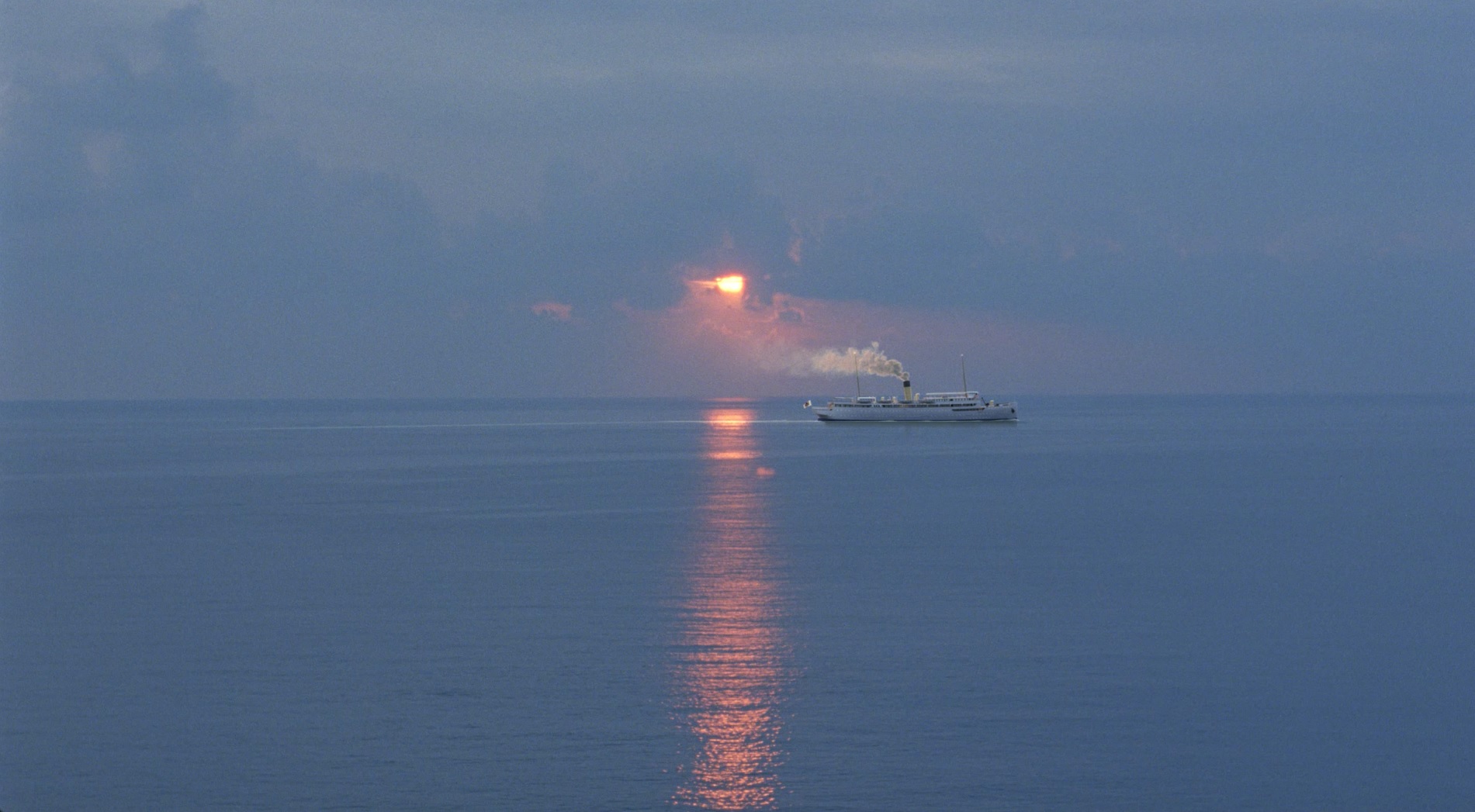
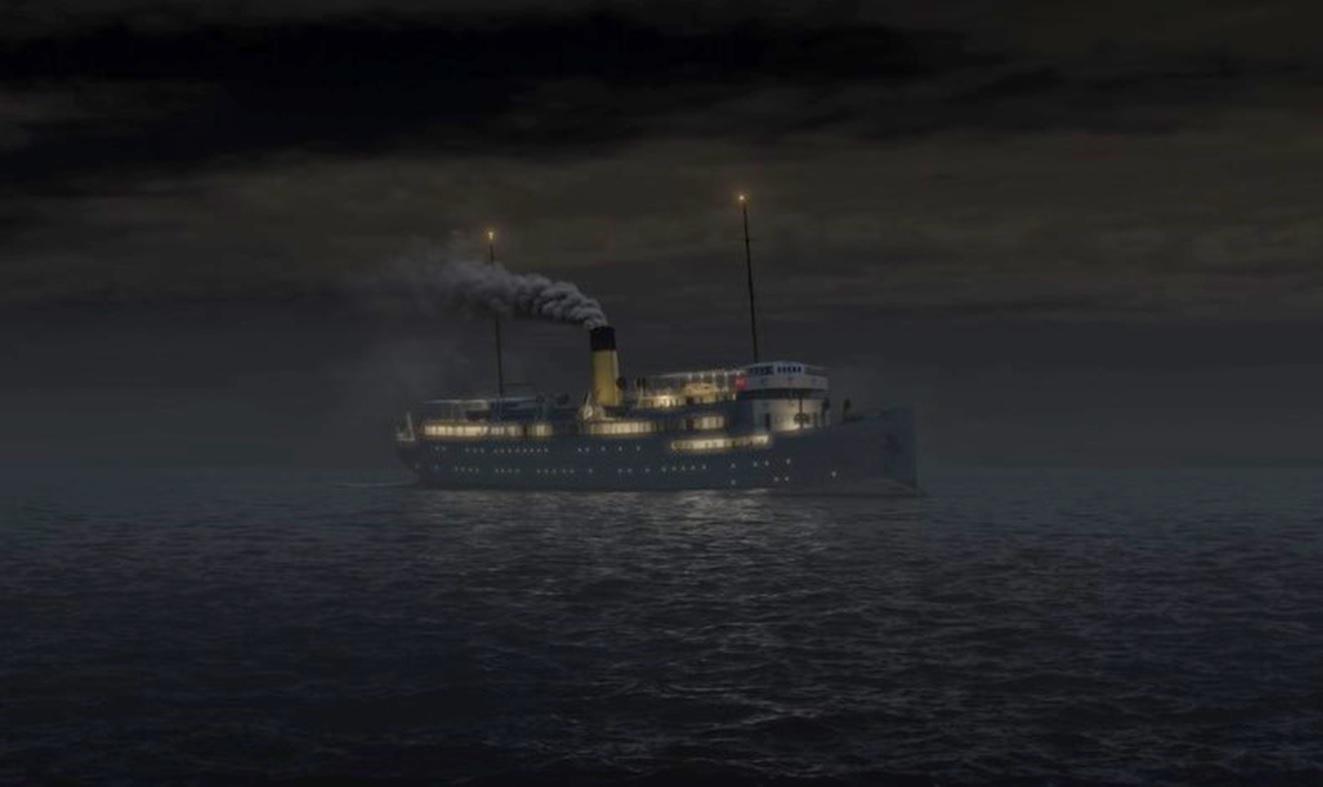
Fig. 2: An ocean liner designed by Tamás Balogh in one of the scenes in the film.
The uniquely huge and accurate digital database provided the right basis, which, together with previous references, enabled the artist to participate in the creative process as a Hungarian - together with Benett Gyurik, animator of the technical drawings, and Péter Könczöl post-production supervisor - for a film series in which he was able to work with the world's most renowned experts and researchers in the history of ocean liners. The list of contributors in the film series includes the names such as Mark Chirnside of Britain, or Dr. Stephen Payne OBE who is the designer of the only real ocean liner on the world at this time, the QUEEN MARY 2. The quality of the film series is revealed by the fact that in addition to the best experts, the richest public collections, (including the National Archives of the United States and the Library of Congress, the Royal Institute of Naval Engineers, and the archives of the French Line) have been provided their collection for the production.
III.) How was the digital profile collection created?
Tamás Balogh became a lover of ocean liners as a child, effect of "The Great Book of Ships" written by Imre Marjai (founder the Association which led by him now), and the image of the sinking TITANIC in that book, painted by Willy Stöwer, and began making drawings of various types of ships, including ocean liners as well.
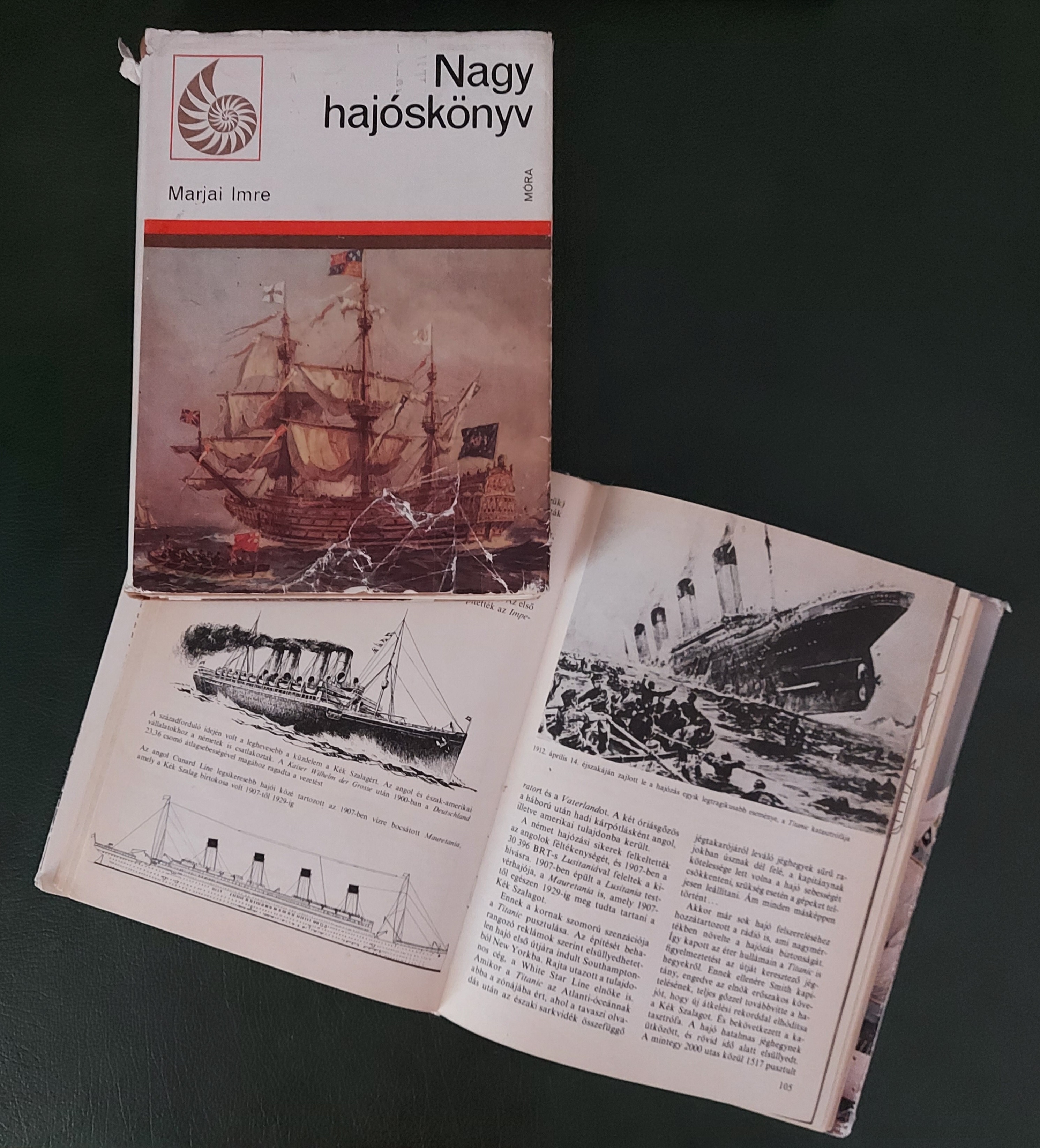
Fig. 3: Imre Marjai: The Great Book of Ships (Móra Publishing House, Budapest, 1981). On the left is the author’s own drawing of the German liner DEUTSCHLAND, and on the right is a painting by Willy Stöwer of the TITANIC disaster.

Fig. 4: The KAISER WILHELM II ocean liner. The colored pen drawing in the style of Imre Marjai (1912-2005) of Hungary and Francis Osborn Braynard (1916-2007) of America is the work of Dr. Tamás Balogh.
However, in addition to the perspective drawings depicting the ships, numerous side and top view drawings have also been made to compare the sizes of different ships or to analyze some of their details.
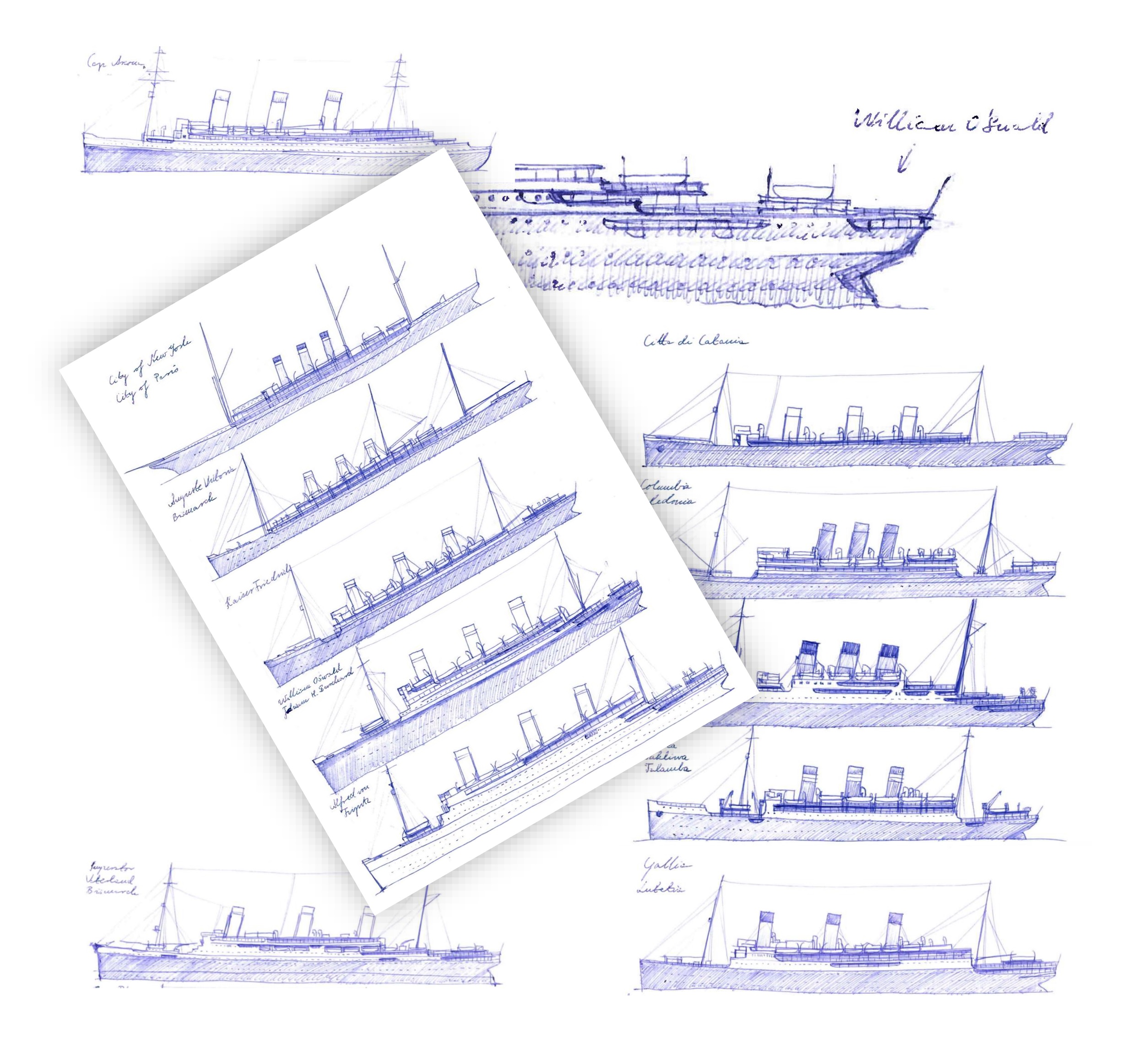
Fig. 5: Sketches which help define terms of proportions and details to find way during the later creative activity (Dr. Tamás Balogh).
It all starts with sketches like this. They help to engrave the form deep into the mind, while also raising awareness of the details which have not yet been thoroughly learned, so more information needs to be obtained about them.
This is followed by the collection of missing information, which can sometimes take years. After all, it is necessary to visit the archives preserving the original plans of the ship, the museums presenting the builder's models and to research as many contemporary photographs and publications as possible, which can give a credible presentation of the details in question. Drawing can only begin after this, based on the information gathered from the documents used as a source. So it is clear that countless sources help clarify all small parts of the ships, down to the most magnute details, until a profile drawing can be made.

Fig. 6: Production and sources of digital profiles from shipyard documents and bilder's models to archive photos (Dr. Tamás Balogh).
IV.) How was animation made from the digital plans?
"Secrets of Lost Liners" documentary production was in the pre-production stage when Tamás Balogh were invited (pre-production is the work done on a film before full-scale production begins, such as the script, casting, location scouting, equipment and crew, and the shot list, i.e. it is the planning stage). Thus, Tamás Balogh had enough time to design the visual world and the animation elements to be presented for each of the 6 episodes.
It soon became clear that directors and producers were not interested in using CGI produced using 3D models, so they opted for 2D animations instead. In line with this, Tamás Balogh built the entire visual world by analogy with the making of technical drawings, in which the individual ships were placed into a gridbox (in front of a lattice background) evoking the added lines of section paper used by engineers, creating the optical illusion of a three-dimensional space by this way. A set of three plan sheets was prepared for each vessel, which included the body plan (together with the half-breadth plan, sheer-plan and rigging plan), general arrangement plan (with cross- and longitudinal sections), and as well as the paint scheme.
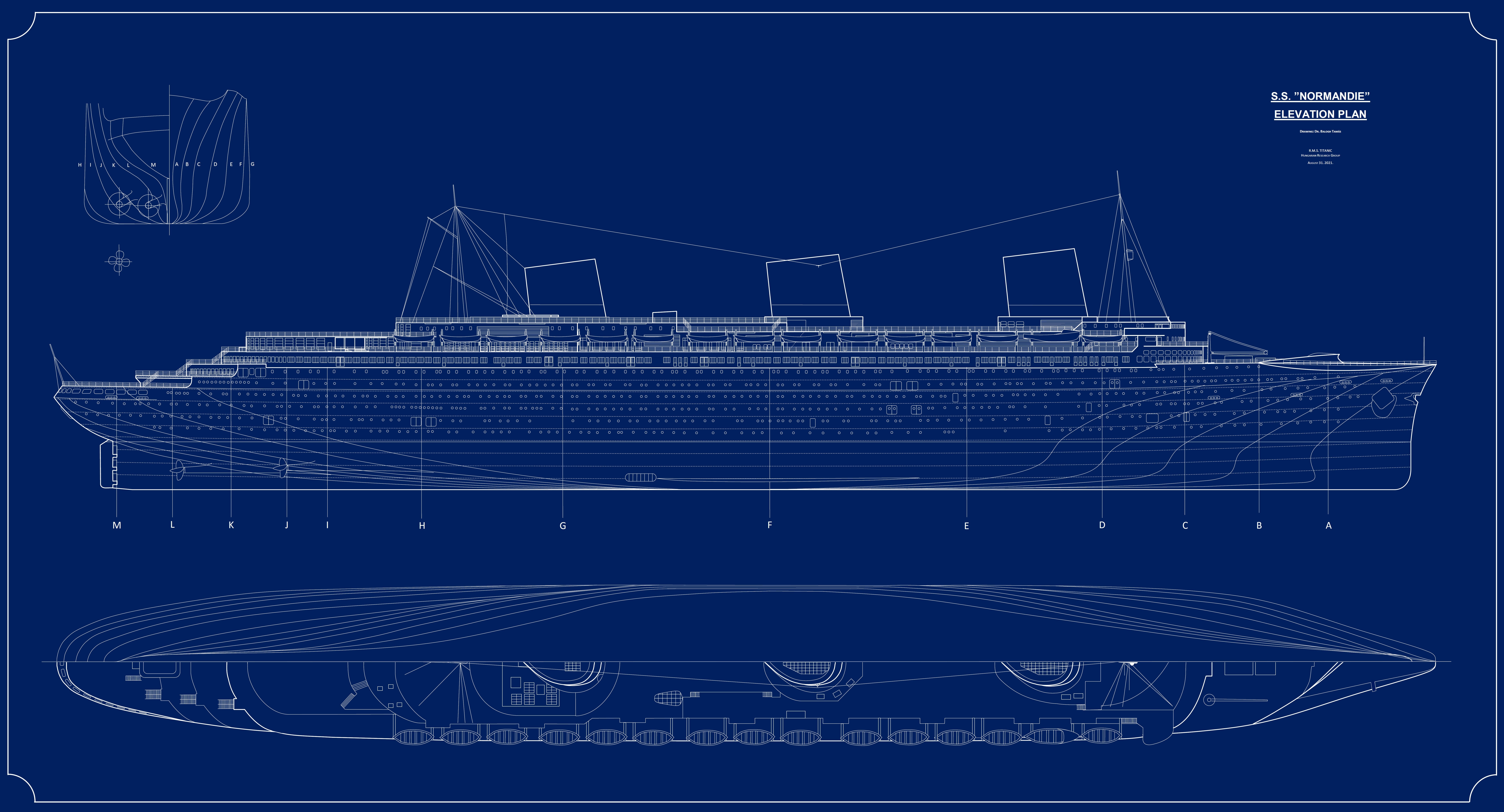
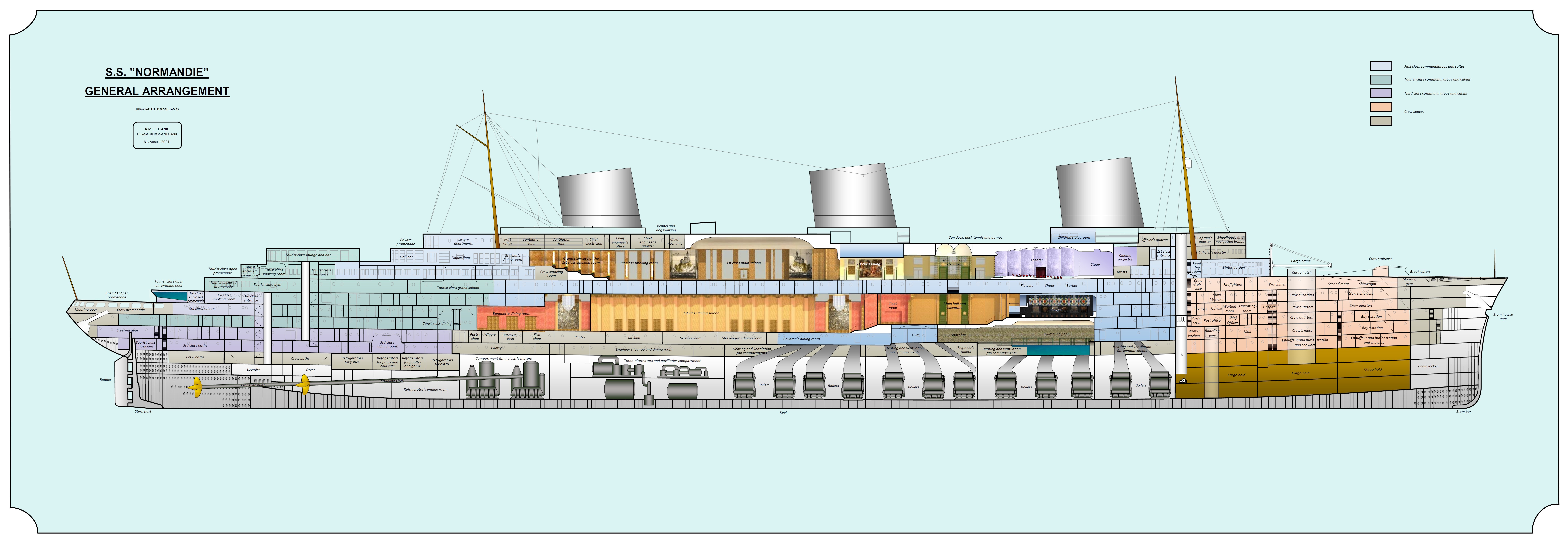

Fig. 7: Digital blueprints and longitudinal section for the episode about the ocean liner NORMANDIE (Dr. Tamás Balogh). Further still images from the planning periode of the creative work can be seen here.
These formed the basic elements, which then made motions during the animation. The sequence of the animation scenes was entirely designed by Dr. Tamás Balogh, who also wrote the screenplay for the scenes containing the animations. The directors of the series gave a completely free hand to this, their instructions did not restrict the creative process.
The preparation of the scenarios was preceded by a thorough analysis of the history of the ships presented in each episode, extensive archival research, including the original records of official investigations into the shipwreck, so that those interested could see in the animations exactly that,, what which and how happened actually.
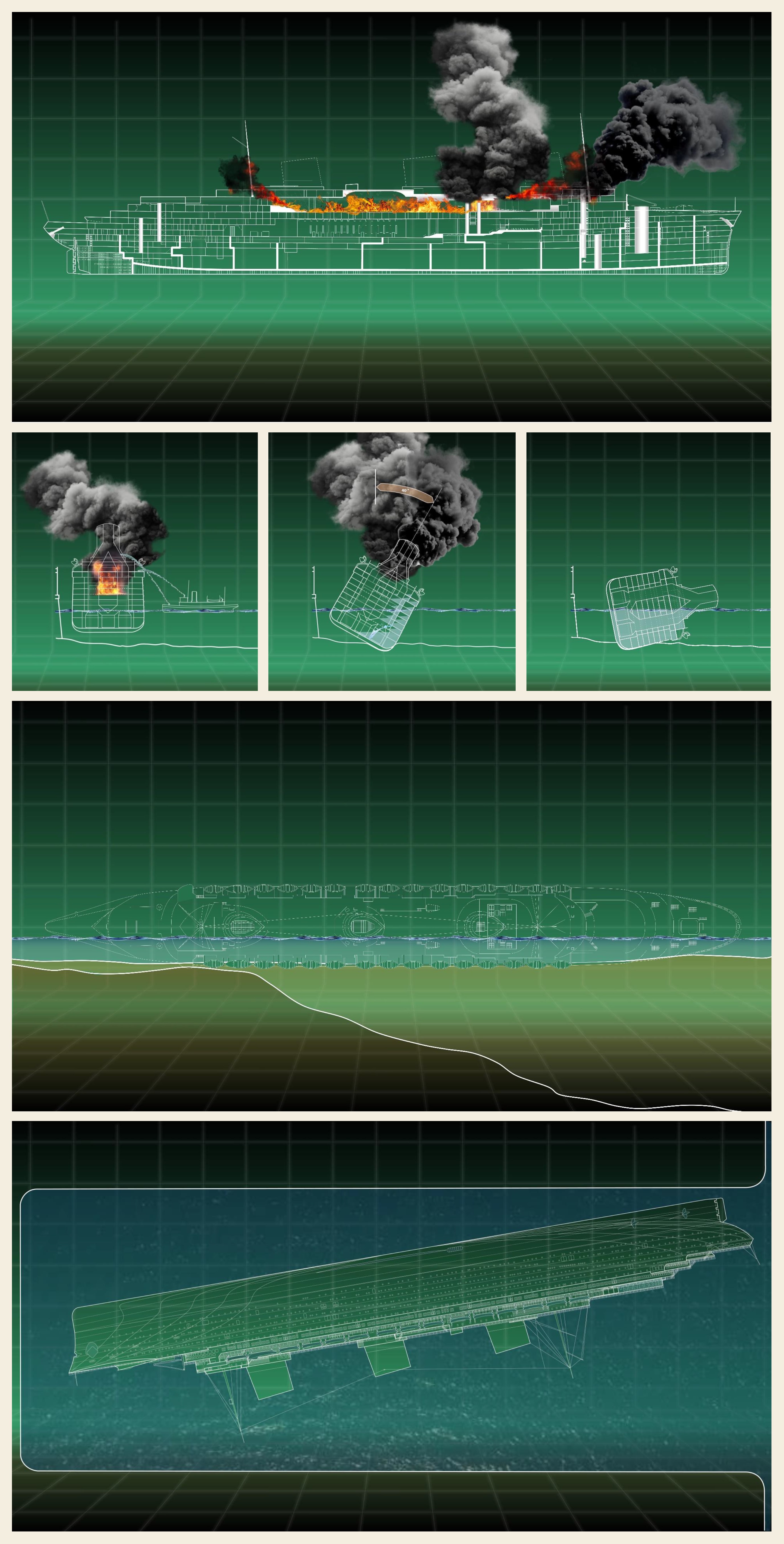
Fig. 8: An animation of the destruction of NORMANDIE accompanies the agony of the ship from the ignition of the fire trough its spread on decks, to the stages of extinguishing the fire and to the capsizing of the ship due to asymmetrical flooding with fire water (Dr. Tamás Balogh).
The directors did not intervene in this work process at all - only after watching the animations made by the Hungarian team, commenting before incorporating them into each episode of the film series - in order to signalize minor modifications which were necessary for use, but apart from these, the animations were accepted, essentially without change.
This - in addition to the research (that forms the basis of the animations), the animation script and the recognition of the quality of the design - is primarily praises the work of Benett Gyurik, who worked as an animator, and Péter Könczöl, who was responsible for quality assurance.
The six episodes of the first season of the series will begin airing in the spring of 2022 on the British program of the History Channel.
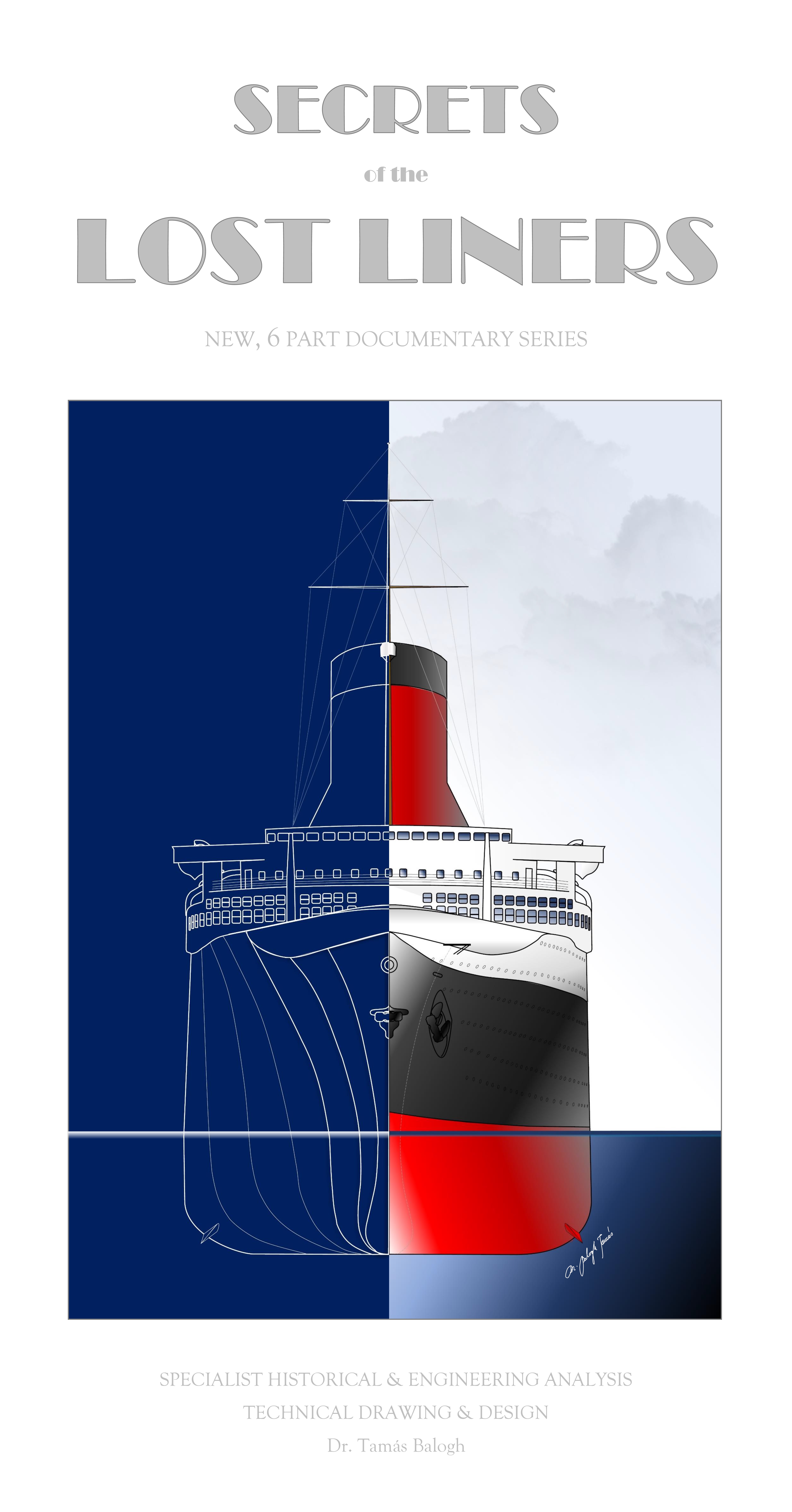
At the end of the joint work, Max Barber acknowledged the quality of our work with a reference letter, responding by this way to the gratitude and joy we felt during the entire periode of the preparation for being able to participate in the project.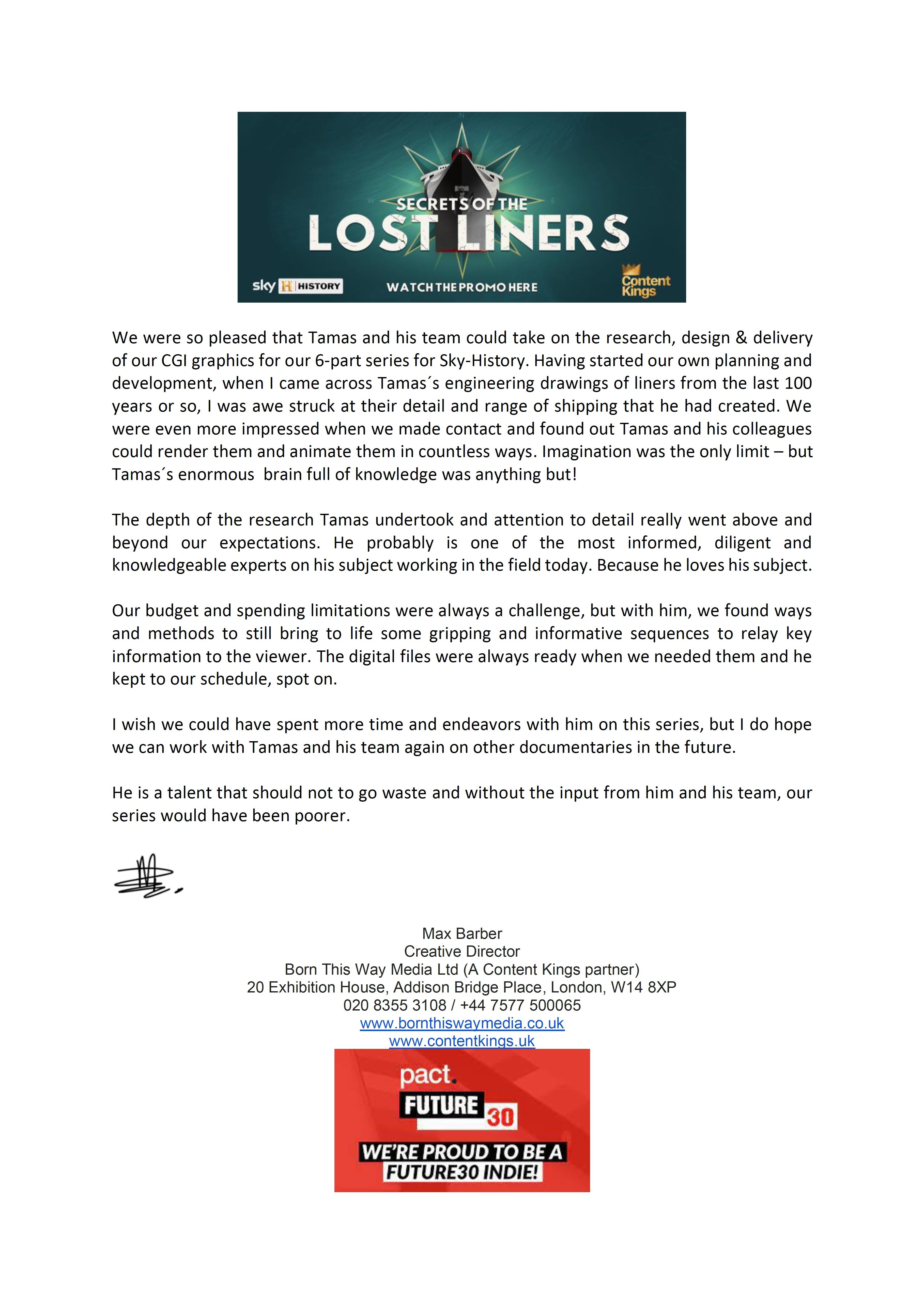
It would be great if you like the article and pictures shared. If you are interested in the works of the author, you can find more information about the author and his work on the Encyclopedia of Ocean Liners Fb-page.If you would like to share the pictures, please do so by always mentioning the artist's name in a credit in your posts. Thank You!

-
Pillantás a rajzirodába – óceánjárók dokumentumfilmes animációja
2021. április 1-én Max Barber, a londoni székhelyű Born This Way Media Kft. kreatív igazgatója azt a kérdést intézte Dr. Balogh Tamáshoz, hajózástörténészhez és hajóroncs-kutatóhoz, az Óceánjáró-enciklopédia szerzőjéhez, hogy bekapcsolódna-e egy 6 – egyenként 60 perces – epizódból álló dokumentumfilm-sorozat gyártásába, amely az „Elveszett óceánjárók – paloták a tengerfenéken” munkacímmel éppen belépett az előgyártás szakaszába. Balogh Tamás a történeti és műszaki elemzések szakértőjeként, valamint a műszaki rajzok készítőjeként és az animációk tervezőjeként kapcsolódott be a projektbe, amelynek általa kezelt részleteibe enged bepillantást az alábbiakban.
I.) Miről szól és hogyan jött létre a sorozat?
A legtöbb embernek az „óceánjáró” szó hallatán a TITANIC jut az eszébe. A végül „Az elveszett óceánjárók titkai” (Secrets of The Lost Liners) címen forgalomba hozott alkotás azonban arra törekszik, hogy kiszabadítsa a fogalmat ennek az egyetlen hajónak az árnyékából és mélyreható tengerészettörténeti sorozatként hiteles képet adjon a világ legnagyobb óceánjáróinak tervezéséről, szolgáltatásairól és elvesztéséről. A sorozat így az elmúlt 100 évben háború, baleset, vagy emberi tévedés eredményeként elsüllyedt leghíresebb óceánjáró személyszállító hajók – a CAP ARCONA (1927-1945), a NORMANDIE (1932-1948), a REX (1931-1944), a QUEEN ELIZABETH (1938-1972), az AMERICA (1939-1994) és az ANDREA DORIA (1951-1956) – történetét dolgozza fel az események történeti kronológiája mellett a hajók tervezésének és biztonsági rendszereinek fejlődését is bemutatva.

1. ábra: A sorozat főcíme. A sorozat előzetese és az első epizód megtekinthető itt.
A sorozat az ismeretterjesztő televíziós műsorok piacán 2020. június – 2021 november folyamán végbement jelentős átalakulásnak köszönhetően jöhetett létre, amikor az amerikai Arrow Media létrehozta az amerikai és az Egyesült Királyságbeli dokumentumműsorok és tartalomszolgáltatók új platformját, illetve amikor a német Herbert L. Kloiber Night Train Media nevű vállalkozása felvásárolta a televíziós jogok forgalmazójaként, televíziós alkotások társproducereként, társfejlesztőjeként és ügynökeként működő brit BossaNova Media Ltd-t. Kettejük együttműködésében hozták létre azt a beszerzési pénzalapot, amely a korszerű dokumentumfilmek immár a második nagy sorozatát hozza létre. Ennek a sorozatnak a részeként jött létre „Az elveszett óceánjárók titkai” első 6 epizódja, amelyet a tervek szerint további részek követnek.
Az alkotó-csapatot a dokumentumfilm-gyártásra specializálódott független alkotókat tömörítő brit Content Kings Ltd. Production és a Born This Way (Így születtek) Media Ltd. munkatársai, Jason Davidson és Peter Roch producerek és rendezők, illetve Max Barber társproducer alkotta, akik a History Channel mellett egyebek közt a BBC, az ITV, a C4, a Channel 5, a Sky, a FOX, az NBC, a Paramount, a National Geographic, a Facebook Watch, a Netflix és a YouTube Originals számára készítenek műsorokat.
II.) Miért és hogyan sikerült magyarként bekapcsolódni a munkába?
Mivel Max Barber értesült Balogh Tamásnak az óceánjárók történetét bemutató projektjéről, amely a világ legnagyobb digitális hajóprofil-gyűjteményének létrehozását eredményezte, azt feltételezte, hogy az alkotó képes lehet bekapcsolódni a filmgyártásba.
A fején találta a szeget: miután egyeztették a részleteket – azt, hogy pontosan mire van szükség a produkcióban – Balogh Tamás szívesen mondott igent a megtisztelő felkérésre, hiszen az általa elvégzett munka eredményeként mintegy 20 ország 100 hajótársaságának 1830-2003 között épült 500 óceánjárójának digitális megformálására került sor Ezen kívül 6 ország 7 hajótársaságának 12 hajója esetében nemcsak a végül megvalósult, de az előzetes terveket is feldolgozta, továbbá 2 olyan hajót is megrajzolt, amelyet ugyan elkezdtek építeni, de végül sohasem fejeztek be, és 3 olyat is, amelyet hadihajóvá építettek át. Végül 7 ország 17 hajótársasága által megrendelt 27 olyan hajó jellegrajzát is elkészítette, amelynek a felépítéséhez végül sohasem kezdtek hozzá.
Ez a munka több célt szolgál egyszerre. Egyrészt az általános ismeretterjesztési célok keretében hozzájárul egy, az óceánjárók történetéről szóló nagy képes enciklopédia kiadásához, valamint különböző, az óceáni személyhajózással kapcsolatos kiállítások szervezéséhez, a szükséges 2D-s grafikus megjelenítés biztosításával. Másrészt kifejezetten azzal a céllal jött létre, hogy a hajók 3D-s megformálása révén az óceánjárók filmes produkciókban történő hiteles, egyben részletgazdag megjelenítését támogassa.
Ez a gyűjtemény a legutóbb Enyedi Ildikó rendező alkotása, a Füst Milán regényéből készült „A feleségem története” c. film elkészítéséhez nyújtott segítséget, amelyet 2021-ben a Cannes-i Filmfesztiválon Arany Pálma díjra, a Sydney Filmfesztiválon a fesztivál díjára, 2022-ben a Keralai Nemzetközi Filmfesztiválon közönségdíjra, a Zsigmond Vilmos fesztiválon pedig a legjobb alkotás díjára jelöltek, s amely 2021-ben az Otrantói Filmfesztiválon a zsűri különdíját nyerte. A filmben szereplő hajókat Balogh Tamás tervezte, s a KGB Stúdió munkatársai keltették életre Klingl Béla vezetésével. A tervezési folyamat részleteiről itt olvashatnak.


2. ábra: A Balogh Tamás tervezte óceánjáró a film egyik jelenetében. További műhelytitkok az alkotás werkfilmjében 1:02-től.
Az egyedülállóan hatalmas és pontos digitális adatbázis jelentette azt a megfelelő alapot, amely, a korábbi referenciákkal együtt alkalmassá tették az alkotót arra, hogy magyarként lehessen részese az alkotófolyamatnak munkatársaival, a műszaki rajzok digitális animációinak gyártása során animátorként közreműködő Gyurik Benettel és a vizuális hatások részleteinek felülvizsgálatáért felelős a Könczöl Péterrel (post-production supervisor) közösen egy olyan filmsorozatban, amelyben a világ legelismertebb szakértőivel dolgozhatott együtt. Hiszen a filmsorozat stáblistáján egyebek között az óceánjárók történetének olyan elismert kutatóinak a neve is szerepel, mint a brit Mark Chirnside, vagy éppen a világ ez idő szerint egyetlen forgalomban álló valódi óceánjárója, a QUEEN MARY 2 tervezője, Dr. Stephen Payne, a Brit Birodalom Rendjének tisztje. A filmsorozat minőségéről az is sokat elárul, hogy a műsorkészítéshez a legkiválóbb szakértők mellett a leggazdagabb közgyűjtemények – egyebek közt az Egyesült Államok Nemzeti Levéltára és Kongresszusi Könyvtára, a Tengerészeti Tervezők Királyi Intézete, vagy épp a French Line archívuma – anyagát is sikerült biztosítani.
III.) Hogyan jött létre a digitális tervrajzgyűjtemény?
Balogh Tamás még gyermekkorában, a ma általa vezetett TIT Hajózástörténeti, Modellező és Hagyományőrző Egyesületet 1979-ben megalapító Marjai Imre „Nagy hajóskönyv” c. alkotása és az abban látható, a süllyedő TITANIC-ot ábrázoló Willy Stöwer-kép hatására vált az óceánjárók szerelmesévé, s kezdett maga is rajzokat készíteni a különböző hajótípusokról, az óceánjárókat is beleértve.

3. ábra: Marjai Imre: Nagy hajóskönyv (Móra Kiadó, Budapest, 1981). A bal oldalon a szerző saját rajza a német DEUTSCHLAND óceánjáróról, a jobb oldalon Willy Stöwer festménye a TITANIC katasztrófájáról.

4. ábra: A KAISER WILHELM II óceánjáró. A magyar Marjai Imre (1912-2005) és az amerikai Francis Osborn Braynard (1916-2007) stílusában készült színezett tollrajz Dr. Balogh Tamás munkája.
A hajókat térben ábrázoló perspektivikus – nézeti – rajzok mellett azonban számtalan oldal- és felülnézeti rajz, a különböző hajók méreteinek összehasonlítására vagy éppen egyes részleteik elemzésére szolgáló vázlat is készült.

5. ábra: Az arányok és a részletek tekintetében a későbbi alkotó tevékenységhez szükséges tájékozódást segítő vázlat-rajzok (Dr. Balogh Tamás).
Minden ehhez hasonló vázlatokkal kezdődik. Ezek segítenek mélyen bevésni a formát, egyúttal azt is tudatosítják, hogy melyek azok a részletek, amelyeket még sikerült eléggé alaposan megismerni, ezért további információkat kell szerezni róluk.
Ezt követően kezdődik a hiányzó információk összegyűjtése, ami olykor évekig is eltarthat. Hiszen fel kell keresni a hajó eredeti terveit őrző archívumokat, a gyári modelleket bemutató múzeumokat és fel kell kutatni a lehető legtöbb korabeli fényképet és kiadványt, amely hitelt érdemlő bemutatását adhatja a kérdéses részleteknek. A forrásként felhasznált dokumentumok – archív tervek, fotók és a hajóról készült gyári modellek - segítségével összegyűjtött információk alapján kezdődhet el aztán a rajzolás. Jól látható tehát, hogy számtalan forrás segít egy-egy apró részlet tisztázásában, míg elkészülhet egy-egy jellegrajz.

6. ábra: A digitális tervrajz készítése és forrásai a gyári tervrajzoktól és modellektől az archív fotókig (Dr. Balogh Tamás).
IV.) Hogyan készült animáció a digitális tervekből?
„Az elveszett óceánjárók titkai” c. dokumentumfilmes produkció Balogh Tamás bevonásakor az előgyártás szakaszában volt (ez a produkció tervezési szakasza azután, hogy a filmötlet „zöld lámpát” kapott, vagyis ez a főfotózás megkezdése előtti szakasz, amely általában a forgatókönyv-kezelést, az ütemezést, a szereplő-válogatást, a díszlettervezést és a pénzügyi tervezést foglalja magában). Így elegendő idő állt rendelkezésre Balogh Tamás számára ahhoz, hogy a 6 epizód mindegyikéhez megtervezhesse a látványvilágot és a bemutatni kívánt animációs elemeket.
Hamar világossá vált, hogy a gyártók nem érdekeltek három dimenziós modellek segítségével előállított CGI alkalmazásában, ezért a 2D animációk mellett döntöttek. Ehhez igazodva Balogh Tamás a műszakirajz-készítés analógiájára építette fel a teljes látványvilágot, amelyben az egyes hajók a milliméter-papír segédvonalait idéző, a háromdimenziós tér optikai illúzióját keltő rácshálós háttér elé kerültek. Minden hajóhoz három tervlapból álló tervkészlet készült, amely tartalmazta a hajók főnézeti rajzait, valamint a bordarajzát, illetve a kereszt- és a hosszmetszetét.



7. ábra: Digitális főnézeti tervrajzok és hosszmetszet a NORMANDIE óceánjáróról szóló epizódhoz (Dr. Balogh Tamás). További információk itt.
Ezek adták azt az alapot, amely aztán megmozdult az animáció során. Az animációs jelenetsorrendjét teljes egészében Dr. Balogh Tamás tervezte, aki az animációkat tartalmazó jelenetek forgatókönyvélt is írta. Ehhez a sorozat rendezői teljesen szabad kezet adtak, instrukcióikkal nem szorították szigorú keretek közé az alkotó folyamatot.
A forgatókönyvek elkészítését az egyes epizódokban bemutatott hajók történetének alapos elemzése, kiterjedt levéltári kutatómunka előzte meg, amely egyebek között az egyes hajók pusztulásával összefüggő hivatalos vizsgálatok eredeti jegyzőkönyveire is kiterjedt annak érdekében, hogy az animációkon egészen biztosan azt és úgy láthassák az érdeklődők, ami és ahogyan valójában történt.

8. ábra: A NORMANDIE pusztulását bemutató animáció a tűz kitörésének helyétől kezdve a fedélzeteken történő szétterjedésén át, a hajó oltásának szakaszait és az oltóvízzel történő aszimmetrikus elárasztás miatti felborulást bemutató jelenetekig kíséri végig a hajó agóniáját (Dr. Balogh Tamás).
A gyártás ebbe a munkafolyamatba egyáltalán nem szólt bele – csak a magyar csapat által elkészített animációk megtekintése után, a filmsorozat egyes epizódjaiba történő beépítés előtt tettek észrevételeket –, s az animációkat a felhasználás érdekében szükséges kisebb-nagyobb módosításokra vonatkozó igények jelzése mellett lényegében változtatások nélkül elfogadták.
Ez az animációk alapját jelentő kutatás, az animációs forgatókönyv és a tervek minőségének elismerése mellett elsősorban az animátorként közreműködő Gyurik Benett és a minőségbiztosítás munkáját lelkes állhatatossággal végző Könczöl Péter munkáját dícséri.
A sorozat első évadának 6 epizódját 2022 tavaszán kezdik vetíteni a History Channel brit adásában.

A közös munka végén Max Barber elismerő hangú referencia-levéllel ismerte el a munka minőségét, ami külön is visszaigazolta a projektben való részvétel menet közben is mindvégig átérzett örömét:

"Elveszett óceánjárók titkaiNagyon örültünk, hogy Tamás és csapata felvállalhatta a Sky-History részére forgatott 6 részes dokumentumfilm-sorozatunkhoz készített CGI grafikáink elkészítéséhez szükséges kutatás, tervezés és szállítás feladatát. Már elkezdtük a saját tervező munkát és fejlesztést, amikor találkoztam Tamásnak az elmúlt 100 évben épült óceánjárókról készített műszaki rajzaival, s lenyűgözött az általa készített ábrázolás részletessége és a hajózás történetének általa lefedett széles köre. Még jobban lenyűgözött bennünket, amikor felvettük a kapcsolatot, és rájöttünk, hogy Tamás és kollégái számtalan módon tudják renderelni és animálni ezeket a rajzokat. Csak a képzelet szabhatott határt – de Tamás hatalmas tudással teli agyára tekintettel tulajdonképpen még az sem!
A Tamás által végzett kutatás mélysége és a részletekre való odafigyelés valóban felülmúlta a várakozásainkat. Valószínűleg ő az egyik legtájékozottabb, legszorgalmasabb és leginkább hozzáértő szakértő a témában napjainkban. Mert szereti a témát.
Költségkeretünk és költekezésünk korlátai mindig is kihívást jelentettek, de vele együtt módokat és módszereket találtunk arra, hogy mégis életre keltsünk néhány lebilincselő és informatív szekvenciát, amellyel kulcsfontosságú információkat juttathatunk el a nézőhöz. A digitális fájlok mindig készen voltak, amikor szükségünk volt rájuk, és ő pontosan tartotta magát az ütemtervünkhöz.
Bárcsak több időt tölthettünk és több erőfeszítést tehettünk volna vele együtt ezen a sorozaton, illetve sorozatért, de remélem, hogy a jövőben más dokumentumfilmeken is együtt dolgozhatunk Tamással és csapatával.
Ő egy olyan tehetség, akit nem szabad elveszíteni, s az ő és csapata közreműködése nélkül a sorozatunk szegényebb lett volna.
Max Barber
kreatív igazgató"
Nagyszerű, ha tetszik a cikk és a benne megosztott képek. Ha érdeklik a szerző munkái, az Encyclopedia of Ocean Liners Fb-oldalán találhat további információkat a szerzőről és munkásságáról.A képek megosztása esetén, a bejegyzésben mindig tüntesse fel az alkotó nevét. Köszönöm!

